
Four Futures: Life After Capitalism
by
Peter Frase
Published 10 Mar 2015
Socialism: Equality and Scarcity 1Kim Stanley Robinson, The Wild Shore, New York: Tom Doherty Associates, 1984; The Gold Coast, New York: Tom Doherty Associates, 1988; Pacific Edge, New York: Tom Doherty Associates, 1990. 2John Christensen and Kim Stanley Robinson, “Planet of the Future,” BoomCalifornia.com, 2014. 3Istvan Csicsery-Ronay and Kim Stanley Robinson, “Pacific Overture: An Interview with Kim Stanley Robinson,” LAReviewofBooks.org, January 9, 2012. 4Robinson, Pacific Edge, pp. 5–6. 5Stanley Jevons, The Coal Question: An Inquiry Concerning the Progress of the Nation and the Probable Exhaustion of Our Coal-Mines, London: Macmillan, 1865. 6For an example of recent work influenced by Hubbert’s theory, see Kenneth S.
…
Would the power of ideology be strong enough to induce people to accept the state of affairs I’ve described? Or would people start to ask why the wealth of knowledge and culture was being enclosed within restrictive laws, when “another world is possible” beyond the regime of artificial scarcity? 3 SOCIALISM: EQUALITY AND SCARCITY Kim Stanley Robinson’s California Trilogy is a triptych of novels, each of which envisions a possible future for Robinson’s home state of California.1 The first novel, The Wild Shore, portrays the simple agricultural life of the survivors of a nuclear war, a tale that might fit into the next chapter on exterminism.
…
Even if some environmentalists may just want to save the whales, that too comes down to the priority they place on being able to live in a world with whales in it. As for the most extreme forms of “deep ecology,” which view humanity as a plague on nature that deserves to be eradicated, these only reduce human-centered ecology to an absurdity in the attempt to escape it, as they project their own nihilism onto an uncaring world. Kim Stanley Robinson’s Mars Trilogy can be read as a critique and explication of the difference between human-centered ecology and nature worship. The books follow the first colonists on Mars, over a struggle lasting hundreds of years to terraform the planet for human habitation. In the first book (Red Mars), the planet is still barely touched, while by the final book (Blue Mars) it is covered with vegetation, rivers, and seas.11 Those who support this process—the destruction of the original Martian environment—are known as “greens,” while those who endorse keeping the planet in its original form—and hence unfit for human habitation—are “reds.”

The Collapse of Western Civilization: A View From the Future
by
Naomi Oreskes
and
Erik M. Conway
Published 30 Jun 2014
Contents a c k n o w l e d g m e n t s vii i n t r o d u c t i o n ix 1 The Coming of the Penumbral Age 1 2 The Frenzy of Fossil Fuels 11 3 Market Failure 35 Epilogue 51 vi C o n t e n t s Lexicon of Archaic Terms 53 Interview with the Authors 63 n o t e s 81 a b o u t t h e au t h o r s 91 m a p s Amsterdam xii Bangladesh 10 New York City 34 Florida 50 acknowledgments We are grateful to Robert Fri, Stephen Ansolabehere, and the staff at the American Academy of Arts and Sciences for commissioning the original version of this work; to the Institute of Advanced Studies at the University of Western Australia where that version was first written; and to Patrick Fitzgerald, Roy Thomas, Milenda Lee, and the diligent and creative team at Columbia University Press for turning it into a book. We also thank our agent, Ayesha Pande, without whom our work would be written but not necessarily read; Kim Stanley Robinson for inspiration; and the audience member at the Sydney Writers’ Festival who asked one of us: “Will you write fiction next?” introduction Science fiction writers construct an imaginary future; historians attempt to reconstruct the past. Ultimately, both are seeking to understand the present.
…
Indeed, it is remarkable how little these extraordinarily T h e F r e n z y o F F o s s i l F u e l s 13 wealthy nations spent to support artistic production; one explanation may be that artists were among the first to truly grasp the significance of the changes that were occurring. The most enduring literary work of this time is the celebrated science “fiction” trilogy by an American writer Kim Stanley Robinson— Forty Signs of Rain, Fifty Degrees Below, and Sixty Days and Counting.5 Sculptor Dario Robleto also “spoke” to the issue, particularly species loss; his material productions have been lost, but responses to his work are recorded in contemporary accounts.6 Some environmentalists also anticipated what was to come, notably the Australians Clive Hamilton and Paul Gilding.
…
The first fiction author I’m aware of who looked seriously at the role of ecosystems in human activities was Frank Her-bert. His 1965 work Dune was a fascinating study of the way a single planet’s ecosystem affected an entire galactic empire. The work most personally influen-tial to us was Kim Stanley Robinson’s two trilogies— his Mars triology, and his climate change trilogy (the latter is the one we mention in the book). They are both complicated stories, but the basic narrative in the Mars story is conflict over how to change the climate to make it inhabitable for Earthlings, while also trying to deal (badly) with climate disruption on Earth.
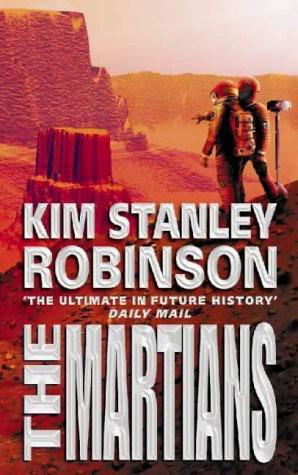
Martians
by
Kim Stanley Robinson
Published 6 Jul 1999
Happiness makes him light on his feet, very light, so light that he is almost floating, so light that if you tried to quantify this quality, if you could put him on the scale of human feeling and weigh him, his weight (in Terran kilograms) would clock in at exactly 3.141592653589793238462643383279502884197 . . . About the Author KIM STANLEY ROBINSON is the author of the Nebula and Hugo Award-winning Mars trilogy— Red Mars, Green Mars, and Blue Mars, as well as Antarctica, The Wild Shore, The Gold Coast, Pacific Edge, A Short, Sharp Shock, and other novels. He lives in Davis, California. Bantam Books by Kim Stanley Robinson Red Mars Green Mars Blue Mars A Short, Sharp Shock Antarctica The Martians Praise for the Novels of Kim Stanley Robinson The Martians "Robinson imagines a comfortably habitable Mars supplied with a breathable atmosphere and blue seas, home to descendants of the human colonizers for whom the heroic events chronicled in the trilogy are already the stuff of history books and rapidly germinating legends."
…
Contents Title page Map Chapter 1: Michel in Antarctica Chapter 2: Exploring Fossil Canyon Chapter 3: Archaea Plot Chapter 4: The Way the Land Spoke to Us Chapter 5: Maya and Desmond Chapter 6: Four Teleological Trails Chapter 7: Discovering Life Chapter 8: Coyote Makes Trouble Chapter 9: Michel in Provence Chapter 10: Green Mars Chapter 11: Arthur Sternbach Bringsthe Curveball to Mars Chapter 12: Salt and Fresh Chapter 13: The Constitution of Mars Chapter 14: Some Worknotes and Commentary on the Constitution, by Charlotte Dorsa Brevia Chapter 15: Jackie on Zo Chapter 16: Keeping the Flame Chapter 17: Saving Noctis Dam Chapter 18: Big Man in Love Chapter 19: An Argument for the Deployment of All Safe Terraforming Technologies Chapter 20: Selected Abstracts from The Journal of Areological Studies Chapter 21: Odessa Chapter 22: Sexual Dimorphism Chapter 23: Enough Is As Good As a Feast Chapter 24: What Matters Chapter 25: Coyote Remembers Chapter 26: Sax Moments Chapter 27: The Names of the Canals Chapter 28: The Soundtrack Chapter 29: A Martian Romance Chapter 30: If Wang Wei Lived on Marsand Other Poems Chapter 31: Purple Mars About the Author Books by Kim Stanley Robinson Praise for Kim Stanley Robinson Copyright Page Michel in Antarctica At first it was fine. The people were nice. Wright Valley was awesome. Each day Michel woke in his cubicle and looked out his little window (everyone had one) at the frozen surface of Lake Vanda, a flat oval of cracked blue ice, flooding the bottom of the valley.
…
"Exploring Fossil Canyon” was previously published in Universe 12, edited by Terry Law, copyright © 1982 by Terry Carr. “Green Mars” was previously published in Asimov's Magazine, copyright © 1985 by Asimov's Magazine. All rights reserved. Copyright © 1999 by Kim Stanley Robinson. "Discovering Life” copyright © 2000 by Kim Stanley Robinson. Library of Congress Catalog Card Number: 99-13115. Bantam Books are published by Bantam Books, a division of Random House, Inc. Its trademark, consisting of the words “Bantam Books” and the portrayal of a rooster, is Registered in U.S. Patent and Trademark Office and in other countries.
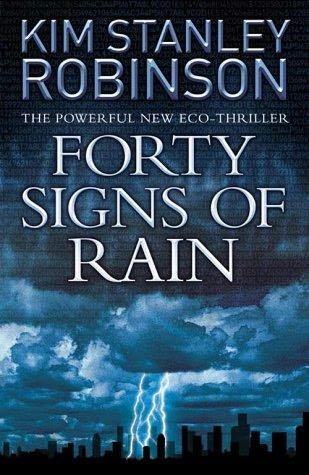
Forty Signs of Rain
by
Kim Stanley Robinson
Published 29 May 2004
Visit our website at www.bantamdell.com Library of Congress Cataloging in Publication Data Robinson, Kim Stanley. Forty signs of rain / Kim Stanley Robinson. p. cm. eISBN 0-553-89817-5 1. Scientists—Fiction. 2. Legislators—Fiction. 3. Washington (D.C.)—Fiction. 4. Business intelligence—Fiction. I. Title. PS3568.O2893F67 2004 2003063683 v1.0 eBook Info Title: Forty Signs of Rain Creator: Kim Stanley Robinson Publisher: Random House Contributor: None Date: 2004-06-01 Format: OEB Identifier: 0-553-89817-5 Type: Subject: Description: Language: en Rights: Copyright © 2004 by Kim Stanley Robinson
…
FORTY SIGNS OF RAIN Kim Stanley Robinson B A N T A M B O O K S TABLE OF CONTENTS Cover Page TITLE PAGE ONE The Buddha Arrives TWO In the Hyperpower THREE Intellectual Merit FOUR Science in the Capital FIVE Athena on the Pacific SIX The Capital in Science SEVEN Tit for Tat EIGHT A Paradigm Shift NINE Trigger Event TEN Broader Impacts ACKNOWLEDGMENTS BOOKS BY KIM STANLEY ROBINSON COPYRIGHT PAGE The Earth is bathed in a flood of sunlight. A fierce inundation of photons—on average, 342 joules per second per square meter. 4185 joules (one calorie) will raise the temperature of one kilogram of water by one degree Celsius.
…
Are you going to do something about global warming now?” Phil grinned his beautiful grin. “I’ll see what I can do!” ACKNOWLEDGMENTS Many thanks for help from Guy Guthridge, Grant Heidrich, Charles Hess, Dick Ill, Chris McKay, Oliver Morton, Lisa Nowell, Ann Russell, Mark Schwartz, Sharon Strauss, and Jim Shea. BOOKS BY KIM STANLEY ROBINSON Fiction The Mars Trilogy Red Mars Green Mars Blue Mars Three Californias The Wild Shore The Gold Coast Pacific Edge Escape from Kathmandu A Short, Sharp Shock Green Mars (novella) The Blind Geometer The Memory of Whiteness Icehenge The Planet on the Table Remaking History Antarctica The Martians The Years of Rice and Salt Nonfiction The Novels of Philip K.

The Best of Kim Stanley Robinson
by
Kim Stanley Robinson
Published 1 Mar 2001
The Best Of Kim Stanley Robinson Edited By Jonathan Strahan NIGHT SHADE BOOKS San Francisco The Best of Kim Stanley Robinson © 2010 by Kim Stanley Robinson This edition of The Best of Kim Stanley Robinson © 2010 by Night Shade Books Jacket art by Joe Jesus Jacket design by Claudia Noble (www.claudianobledesign.com) Interior layout and design by Ross E. Lockhart All rights reserved Page 389 represents an extension of this copyright page. First Edition ISBN: 978-1-59780-184-3 Night Shade Books Please visit us on the web at http://www.nightshadebooks.com Contents Venice Drowned Ridge Running Before I Wake Black Air The Lucky Strike A Sensitive Dependence on Initial Conditions Arthur Sternbach Brings The Curveball To Mars The Blind Geometer Our Town Escape From Kathmandu Remaking History The Translator Glacier The Lunatics Zürich Vinland the Dream “A History of the Twentieth Century, with Illustrations” Muir on Shasta Sexual Dimorphism Discovering Life Prometheus Unbound, At Last The Timpanist of the Berlin Philharmonic, 1942 Afterword by Kim Stanley Robinson First Publications: Venice Drowned By the time Carlo Tafur struggled out of sleep, the baby was squalling, the teapot whistled, the smell of stove smoke filled the air.
…
First Edition ISBN: 978-1-59780-184-3 Night Shade Books Please visit us on the web at http://www.nightshadebooks.com Contents Venice Drowned Ridge Running Before I Wake Black Air The Lucky Strike A Sensitive Dependence on Initial Conditions Arthur Sternbach Brings The Curveball To Mars The Blind Geometer Our Town Escape From Kathmandu Remaking History The Translator Glacier The Lunatics Zürich Vinland the Dream “A History of the Twentieth Century, with Illustrations” Muir on Shasta Sexual Dimorphism Discovering Life Prometheus Unbound, At Last The Timpanist of the Berlin Philharmonic, 1942 Afterword by Kim Stanley Robinson First Publications: Venice Drowned By the time Carlo Tafur struggled out of sleep, the baby was squalling, the teapot whistled, the smell of stove smoke filled the air. Wavelets slapped the walls of the floor below. It was just dawn. Reluctantly he untangled himself from the bedsheets and got up.
…
The timpanist listened, quivering, his eyes fixed on Furtwängler’s face. In the silence certain to follow, everything that so horribly portended would come to pass, all that hung over this night like a sword—their ongoing crime, the inevitable judgment, death itself—none of it mattered. They were gone. Afterword by Kim Stanley Robinson Thanks First: thank you, readers of my fiction; I appreciate your giving it your time and thought, which brings it to life. This is also a good place to thank all the editors who helped me with these stories. Damon Knight was my first editor and one of my most important teachers. I miss him.
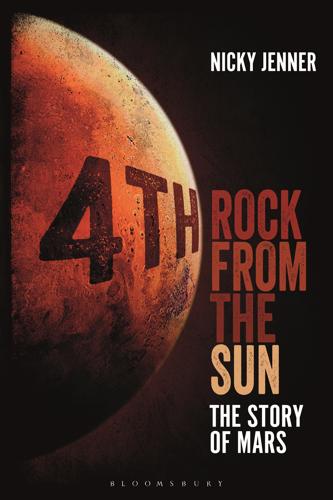
4th Rock From the Sun: The Story of Mars
by
Nicky Jenner
Published 5 Apr 2017
Some of the more prominent works that dreamt up a canal-covered Mars include astronomer and author Camille Flammarion’s 1889 novel Uranie (Urania in later English versions), Tarzan creator Edgar Rice Burroughs’s 1912 Barsoom series, Robert A. Heinlein’s 1949 Red Planet, parts of Ray Bradbury’s The Martian Chronicles in the 1950s and, later on, Kim Stanley Robinson’s 1990s Mars trilogy. The canals in these novels ranged from thin irrigation canals like those found on Earth, to trenches filled with frozen water, to channels burnt into the Martian soil by scorching sunlight. Incidentally, the Barsoom series, namely the book A Princess of Mars starring a protagonist named John Carter of Mars, was recently adapted into a 2012 Disney film named John Carter, removing all reference to Mars in the title.
…
Asimov’s book was politically motivated and aimed to criticise the political repression and fear-mongering ways of 1950s McCarthyism in America. Asimov was wary of publishing the book, expecting a strong backlash, but actually experienced nothing at all. He was reportedly quite irritated by this, noting that ‘I must have been too subtle – or too unimportant’. Many other authors got in on the Mars action. Kim Stanley Robinson’s more recent Mars trilogy (Red Mars, Green Mars, Blue Mars) is incredibly comprehensive, chronicling two centuries of colonisation and terraformation of Mars. The trilogy creates an entirely new universe and has been called the ‘gold standard’ of realistic science-fiction writing (in recent years, The Martian has garnered similar praise).
…
NASA’s Phoenix lander, which reached the Martian surface in May 2008, paid homage to the many different human imaginations of Mars that undoubtedly helped it get there. On board was a DVD entitled Visions of Mars. This disc held numerous pieces of fiction and non-fiction from a whole host of authors including Carl Sagan, Isaac Asimov, Ray Bradbury, Kim Stanley Robinson, Arthur C. Clarke, Percival Lowell and many more, accompanied by visual artwork. The very first Martian library! ‘These tales and images have inspired generations about the wonder of space, including many men and women who are now researchers and engineers in the space programme,’ explained Louis Friedman, executive director of the Planetary Society, who conceived the idea for Visions of Mars.
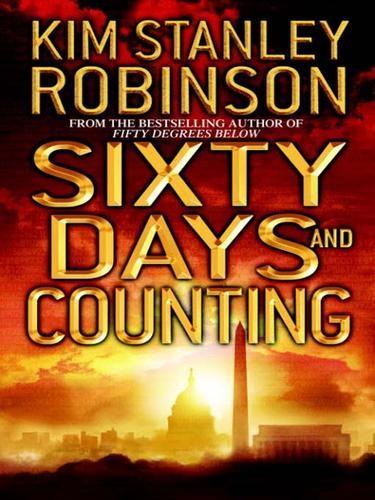
Sixty Days and Counting
by
Kim Stanley Robinson
Published 27 Feb 2007
Brown, Joy Chamberlain, Rita Colwell, William Fox, Doug Fratz, Anne Groell, Jennifer Holland, Jane Johnson, Mark Lewis, Rich Lynch, Lisa Nowell, Michael Schlesinger, Jim Shea, Darko Suvin, Ralph Vicinanza, Paul J. Werbos, and Donald Wesling. ABOUT THE AUTHOR KIM STANLEY ROBINSON is a winner of the Hugo, Nebula, and Locus Awards. He is the author of nineteen previous books, including the bestselling Mars trilogy and the critically acclaimed Forty Signs of Rain, The Years of Rice and Salt, and Antarctica—for which he was sent to the Antarctic by the U.S. National Science Foundation as part of their Antarctic Artists and Writers’ Program. He lives in Davis, California. ALSO BY KIM STANLEY ROBINSON Fiction The Mars Trilogy Red Mars Green Mars Blue Mars Three Californias The Wild Shore The Gold Coast Pacific Edge Escape from Kathmandu A Short, Sharp Shock Green Mars (novella) The Blind Geometer The Memory of Whiteness Icehenge The Planet on the Table Remaking History Antarctica The Martians The Years of Rice and Salt Forty Signs of Rain Fifty Degrees Below Nonfiction The Novels of Philip K.
…
Names, characters, places, and incidents either are the product of the author’s imagination or are used fictitiously. Any resemblance to actual persons, living or dead, events, or locales is entirely coincidental. All rights reserved. Copyright © 2007 by Kim Stanley Robinson * * * Bantam Books, the rooster colophon, Spectra, and the portrayal of a boxed “s” are trademarks of Random House, Inc. * * * Library of Congress Cataloging-in-Publication Data Robinson, Kim Stanley. Sixty days and counting / Kim Stanley Robinson. p. cm. eISBN: 978-0-553-90350-8 1. Global warming—Fiction. 2. Climatic changes—Fiction. 3. Scientists—Fiction. 4. Presidents—Fiction. 5. Legislators—Fiction. 6.
…
CONTENTS COVER PAGE TITLE PAGE ONE A New Reality TWO Cut to the Chase THREE Going Feral FOUR The Technological Sublime FIVE Undecided SIX Sacred Space SEVEN Emerson for the Day EIGHT Partially Adjusted Demand NINE The Dominoes Fall TEN You Get What You Get ACKNOWLEDGMENTS ABOUT THE AUTHOR ALSO BY KIM STANLEY ROBINSON COPYRIGHT “I believe the twenty-first century can become the most important century of human history. I think a new reality is emerging. Whether this view is realistic or not, there is no harm in making an effort.” —The Dalai Lama, November 15, 2005, Washington, D.C. Why do you do what you do?

Lurking: How a Person Became a User
by
Joanne McNeil
Published 25 Feb 2020
Peter Ludlow, MIT Press, 1996). It is also widely available online. Adam Curtis appeared on Jarvis Cocker’s Sunday Service on May 22, 2011, to discuss his documentary program All Watched Over by Machines with Loving Grace, which quotes humdog’s manifesto. Kim Stanley Robinson defined utopia in an interview with Amazing Stories (R. K. Troughton, “Interview with Award-Winning Author Kim Stanley Robinson,” September 25, 2013): “One point I’ve been making all along is that even in a utopian situation, there will still be death and lost love, so there will be no shortage of tragedy in utopia. It will just be the necessary or unavoidable tragedies; which perhaps makes them even worse, or more tragic.
…
Decentralization isn’t much without a noncommercial mission, but now we’re back to the demand, beneath the gloss of social internet, from cyberspace to social media: How does society dismantle hierarchies, bring about progressive social change, and negate corruption, bias, exploitation, and injustice—problems born online or there all along? Regarding these age-old questions, I often think about Kim Stanley Robinson’s definition of utopia—it emerges from abolishing all but the “necessary” human tragedies. That plus online is utopia online. Utopia is an impossible condition, on the internet or offline, but the internet can provide moments of solace. It might be found in messages users send one another in real time or in words in digital archives or old websites that offer comfort to a person in the here and now.

Red Mars
by
Kim Stanley Robinson
Published 23 Oct 1992
About the Author KIM STANLEY ROBINSON is the author of the Nebula and Hugo Award-winning Mars trilogy—Red Mars, Green Mars, and Blue Mars as well as The Years of Rice and Salt, The Martians, Antartica, The Wild Shore, The Gold Coast, Pacific Edge, A Short, Sharp Shock, and other novels. He lives in Davis, California. Bantam Books by Kim Stanley Robinson FICTION The Mars Trilogy Red Mars Green Mars Blue Mars A Short, Sharp Shock Antarctica The Martians Look for The Years of Rice and Salt Available now in hardcover Praise for Kim Stanley Robinson and Red Mars “The novels and short stories of Kim Stanley Robinson constitute one of the most impressive bodies of work in modern science fiction . . . he virtually invented a new kind of science fiction in which characters as richly drawn as any in conventional fiction inhibit near future worlds evoked with as much versimilitude as the contemporary settings of any conventional novel
…
* * * RED MARS Kim Stanley Robinson * * * Bantam Books for Lisa ContentsPart 1: Festival Night Part 2: The Voyage Out Part 3: The Crucible Part 4: Homesick Part 5: Falling into History Part 6: Guns Under the Table Part 7: Senzeni Na Part 8: Shikata Ga Nai Map Part 1 Festival Night Mars was empty before we came. That’s not to say that nothing had ever happened. The planet had accreted, melted, roiled and cooled, leaving a surface scarred by enormous geological features: craters, canyons, volcanoes. But all of that happened in mineral unconsciousness, and unobserved.
…
Bantam Books by Kim Stanley Robinson FICTION The Mars Trilogy Red Mars Green Mars Blue Mars A Short, Sharp Shock Antarctica The Martians Look for The Years of Rice and Salt Available now in hardcover Praise for Kim Stanley Robinson and Red Mars “The novels and short stories of Kim Stanley Robinson constitute one of the most impressive bodies of work in modern science fiction . . . he virtually invented a new kind of science fiction in which characters as richly drawn as any in conventional fiction inhibit near future worlds evoked with as much versimilitude as the contemporary settings of any conventional novel.” — The New York Times Book Review “Robinson provides enough ‘sense of wonder’ for any dozen SF novels, introduces and juggles a mammoth cast of characters and provides intrigue, mystery, murder and political maneuvering, as well as a nuts-and-bolts account of how human technology would tame a wild planet

Mapping Mars: Science, Imagination and the Birth of a World
by
Oliver Morton
Published 15 Feb 2003
From Larry Niven, who has just written a fantasy in which all humanity’s dreams about Mars come true at the same time; from Greg Bear, whose Moving Mars imagined the planet’s future as a backwater from which settlers watch the ever more high-tech Earth redefine what is human; from Gregory Benford, whose The Martian Race, published this very weekend, sets a new standard of technical accuracy for first-mission-to-Mars stories. And from Kim Stanley Robinson, whose books Red Mars, Green Mars, and Blue Mars provide the fullest picture yet attempted of life on that planet. Unlike every previous generation of science fiction writers, these men have had data from Mars’s orbit and the Martian surface on which to base their visions, and they are scrupulous in their use.
…
The answer is that the Syria in question is not the Levantine country, but the island in the Odyssey “where are the turning places of the sun” (hence its position near Daedalia and Solis Planum), and that Sinai was named in error when the IAU cleaned up the planet’s nomenclature; it was close to a feature Schiaparelli had called Mare Erythraeum, which the IAU translated literally as “the Red Sea,” rather than correctly as the Indian Ocean. * Some have transferred the giganticism of Martian landscapes onto the planet’s inhabitants; Lowell imagined that weaker gravity would allow Martians to be three times taller and nine times stronger than humans. In Kim Stanley Robinson’s novel Red Mars the colonists invent a mythical “Big Man” whose name gets attached to outsized features: “Big Man’s Toothbrush,” “Big Man’s Shaving Bowl.” Applying the nineteenth-century biologist Karl George Bergmann’s observation that animals in related species tend to be bigger in colder climates, Carl Sagan used to speculate that Martians might be huge, polar bear-like things
…
Reflections —I love all waste And solitary places; where we taste The pleasure of believing what we see Is boundless, as we wish our souls to be: And such was this wide ocean, and this shore More barren than its billows;— —Shelley, “Julian and Maddalo” Carr’s The Surface of Mars was to have a great influence. For a decade, it was the only major scientific text that dealt with every aspect of the planet’s geology in the light of the results from the Viking missions. As such, it interested not just scientists, but also science fiction writers—most notably Kim Stanley Robinson. After some success with his first novel, The Wild Shore, written while he was studying literature at the University of California, San Diego, Robinson thought it might be worth revising an earlier unsold novel, The Grand Tour, which dealt with a trip through the solar system from Pluto to Mercury.
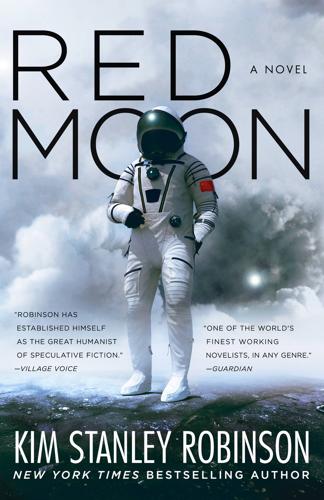
Red Moon
by
Kim Stanley Robinson
Published 22 Oct 2018
orbitbooks.net orbitshortfiction.com Copyright This book is a work of fiction. Names, characters, places, and incidents are the product of the author’s imagination or are used fictitiously. Any resemblance to actual events, locales, or persons, living or dead, is coincidental. Copyright © 2018 by Kim Stanley Robinson Cover design by Lauren Panepinto Cover image by Arcangel Cover copyright © 2018 by Hachette Book Group, Inc. Hachette Book Group supports the right to free expression and the value of copyright. The purpose of copyright is to encourage writers and artists to produce the creative works that enrich our culture.
…
The publisher is not responsible for websites (or their content) that are not owned by the publisher. The Hachette Speakers Bureau provides a wide range of authors for speaking events. To find out more, go to www.hachettespeakersbureau.com or call (866) 376-6591. Library of Congress Cataloging-in-Publication Data Names: Robinson, Kim Stanley, author. Title: Red moon / Kim Stanley Robinson. Description: First edition. | New York, NY : Orbit, 2018. Identifiers: LCCN 2018018239| ISBN 9780316262378 (Hardcover) | ISBN 9780316262392 (Trade Paperback) | ISBN 9781549194986 (Audio Book (download)) | ISBN 9781549142598 (Audio Book (CD)) | ISBN 9780316262354 (ebook (open)) Subjects: LCSH: Life on other planets—Fiction. | GSAFD: Science fiction.
…
Classification: LCC PS3568.O2893 R445 2018 | DDC 813/.54—dc23 LC record available at https://lccn.loc.gov/2018018239 ISBNs: 978-0-316-26237-8 (hardcover), 978-0-316-26235-4 (ebook), 978-0-316-52969-3 (B&N Black Friday signed special edition), 978-0-316-52970-9 (BN.com signed special edition) E3-20180905-JV-PC CONTENTS Cover Title Page Copyright CHAPTER ONE nengshang nengxia Can Go Up Can Go Down (Xi) AI 1 shen yu Oracle CHAPTER TWO bo hanshu tansuo Quantum Wave Collapse TA SHU 1 yueliang de fenmian The Birth of the Moon CHAPTER THREE taoguang yanghui Keep a Low Profile (Deng) AI 2 ganrao shebei Interference with the Device TA SHU 2 xia yi bu The Next Step CHAPTER FOUR di chu Earthrise TA SHU 3 yueliang ren Moon Person CHAPTER FIVE tao dao diqiu shang Escape to Earth AI 3 shexian ren zai chuxian Reappearance of the Subject CHAPTER SIX liangzichanjie Entanglement CHAPTER SEVEN fu nu neng ding ban bian tian Women Hold Up Half the Sky (Mao) AI 4 shexian ren shizongle Disappearance of the Subject TA SHU 4 laojia Ancestral Home CHAPTER EIGHT tai diejia yuanli Superposition TA SHU 5 da huozhe xiao Big or Small AI 5 wolidou Infighting CHAPTER NINE tao dao yueliang shang Escape to the Moon AI 6 jimi tongxin Secure Communication CHAPTER TEN Zhongguo Meng China Dream AI 7 zhiyou guanlianjie Only Connect TA SHU 6 qi ge hao liyou The Seven Good Reasons CHAPTER ELEVEN xiaokang Ideal Equal Society AI 8 lianxi Contact CHAPTER TWELVE zhengzhi luxian de zhenglun Debates About Theory AI 9 xue liang Sharp Eyes CHAPTER THIRTEEN bei ai Sorrow AI 10 zou Go CHAPTER FOURTEEN hai-3 Helium Three AI 11 xiao yanzhu Little Eyeball CHAPTER FIFTEEN mozhe shitou guo he Crossing the River by Feeling the Stones (Deng) CHAPTER SIXTEEN tianxia All Under Heaven AI 12 houhui Regret TA SHU 7 Tao Yuan Xing Source of the Peach Blossom Stream (Wang Wei) CHAPTER SEVENTEEN shoulie laohu Tiger Hunting AI 13 mei hao sheng huo A Beautiful Life (Xi) CHAPTER EIGHTEEN liliang pingheng Balance of Forces CHAPTER NINETEEN daibiao xing weiji Crisis of Representation TA SHU 8 feng shui Wind Water AI 14 zhengming wanbi QED CHAPTER TWENTY chaodai jicheng Dynastic Succession By Kim Stanley Robinson Orbit Newsletter CHAPTER ONE nengshang nengxia Can Go Up Can Go Down (Xi) Someone had told him not to look while landing on the moon, but he was strapped in his seat right next to a window and could not help himself: he looked. Quickly he saw why he had been told not to—the moon was doubling in size with every beat of his heart, they were headed for it at cosmic speed and would certainly vaporize on impact.

How to Spend a Trillion Dollars
by
Rowan Hooper
Published 15 Jan 2020
‘It’s not if we evolve; it’s when we evolve,’ Mason says.21 So, the reasoning goes, we might as well gene-edit humans to help their physiology survive. There is plenty of science fiction where humans break free of their Earthly shackles and expand across the galaxy – the Culture novels of Iain M. Banks, Ancillary Justice by Ann Leckie and Kim Stanley Robinson’s 2312, to name just a few. In these books humans have also broken free of one the key boundaries that define us: mortality. People live for thousands of years, getting repairs, upgrades, augmentations and even new bodies when necessary. The idea that we might be able change something as fundamental as the fact of death is a dizzying prospect.
…
This is a good initial solution, but in the longer run we want to move, Hobbit-like, to the tunnels. It might be advisable to build rotating homes for new arrivals, where the centrifugal force restores an Earth-like feeling of gravity, but once you’re used to moving around in microgravity you can have some real fun. In his novel Red Moon, Kim Stanley Robinson describes settlements on the Moon, mostly built by the Americans and the Chinese, but some, such as the Free Crater, are independently financed. Here’s the scene where the protagonists first visit it: The entire space of the crater was aerated and heated, and brightly lit by mirrors and floodlights set all around the rim.
…
Any remaining mistakes, of course, are mine. Many other friends and fellow writers and contacts have provided support and advice in various ways: Gaia Vince, Celeste Biever, Catherine Brahic, Oliver Morton, Victoria James, Simon Aldridge, Cixin Liu (even though I didn’t follow your advice on what to do with the money), Kim Stanley Robinson, Christiana Figueres, Tom Rivett-Carnac, Chris Goodall, Tom Belsham, Anit Mukherjee, Chris Faulkes – thanks to you all. Thanks to my family for your support, especially during lockdown: Ros, John, Steve, Eileen; my mum and Richard, dad and Kathy; Gemma and Phil, Mack and Nate, Scout and Nellie.
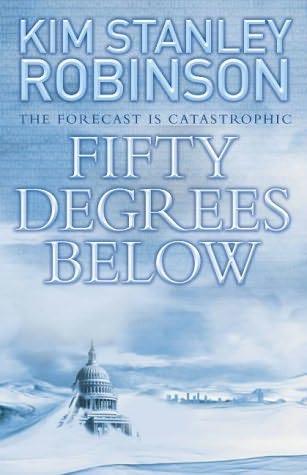
Fifty Degrees Below
by
Kim Stanley Robinson
Published 25 Oct 2005
Names, characters, places, and incidents either are the product of the author’s imagination or are used fictitiously. Any resemblance to actual persons, living or dead, events, or locales is entirely coincidental. All rights reserved. Copyright © 2005 by Kim Stanley Robinson Bantam Books, the rooster colophon, Spectra, and the portrayal of a boxed “s” are trademarks of Random House, Inc. Library of Congress Cataloging-in-Publication Data Robinson, Kim Stanley. Fifty degrees below / Kim Stanley Robinson. p. cm. eISBN: 0-553-90207-5 1. Washington (D.C.)—Fiction. I. Title. PS3568.O2893F54 2005 813′.54—dc22 2005048074 www.bantamdell.com v1.0
…
TABLE OF CONTENTS Cover Page Title Page ONE Primate In Forest TWO Abrupt Climate Change THREE Back To Khembalung FOUR Is There A Technical Solution? FIVE Autumn In New York SIX Optimodal SEVEN The Cold Snap EIGHT Always Generous NINE Leap Before You Look TEN Primavera Porteño Acknowledgments Also by Kim Stanley Robinson Copyright Page Nobody likes Washington, D.C. Even the people who love it don’t like it. Climate atrocious, traffic worse: an ordinary midsized gridlocked American city, in which the plump white federal buildings make no real difference. Or rather they bring all the politicians and tourists, the lobbyists and diplomats and refugees and all the others who come from somewhere else, often for suspect reasons, and thereafter spend their time clogging the streets and hogging the show, talking endlessly about their nonexistent city on a hill while ignoring the actual city they are in.
…
ACKNOWLEDGMENTS Thanks for always generous help from: Jürgen Atzgerstorfer, Terry Baier, Willa Baker, Guy Guthridge, George Hazelrigg, Charles Hess, Tim Highham, Neil Koehler, Rachel Park, Ann Russell, Tom St. Germain, Michael Schlesinger, Mark Schwartz, Jim Shea, Gary Snyder, Mark Thiemens, Buck Tilley, and Paul J. Werbos. ALSO BY KIM STANLEY ROBINSON Fiction The Mars Trilogy Red Mars Green Mars Blue Mars The California Trilogy The Wild Shore The Gold Coast Pacific Edge Escape from Kathmandu A Short, Sharp Shock Green Mars (novella) The Blind Geometer The Memory of Whiteness Icehenge The Planet on the Table Remaking History Antarctica The Martians The Years of Rice and Salt Forty Signs of Rain Nonfiction The Novels of Philip K.

The Stack: On Software and Sovereignty
by
Benjamin H. Bratton
Published 19 Feb 2016
United Nations Office for Outer Space Affairs, “Treaty on Principles Governing the Activities of States in the Exploration and Use of Outer Space, including the Moon and Other Celestial Bodies,” January 1967, http://www.unoosa.org/oosa/SpaceLaw/outerspt.html. 8. McKenzie Wark, Molecular Red: Theory for the Anthropocene (London: Verso, 2015); Kim Stanley Robinson, Red Mars (New York: Bantam Books; 1993); Kim Stanley Robinson, Green Mars (New York: Bantam Books, 1994); Kim Stanley Robinson, Blue Mars (New York: Bantam Books, 1996). 9. Arjun Appadurai, “Sovereignty without Territoriality: Notes for a Postnational Geography,” in Geography of Identity, ed. Patricia Yaeger (Ann Arbor: University of Michigan Press, 1996), 40–58. 10.
…
Hall, Serene Han, Usman Haque, Dick Hebdige, Oliver Hess, Bradley Horowitz, Georgina Huljich, Jeffrey Inaba, Xeni Jardin, Adriene Jenik, Daniel Jennett, Natalie Jeremijenko, Andrew Jones, Joshua Kauffman, Ed Keller, Cheryl Kellond, Jeff Kipnis, Wolf Kittler, Norman Klein, Peter Krapp, Vinca Kruk, Steve Kurzman, Sanford Kwinter, Sylvia Lavin, Rachel Law, Neil Leach, Carla Leiato, Elizabeth Losh, Sylvère Lotringer, Peter Lunenfeld, Greg Lynn, Geoff Manaugh, Miltos Manetas, Elena Manferdini, David Maymudes, Cynthia McCauley, Nandita Biswas Mellamphy, Rebeca Mendez, Andrew Mitchell, Christian Moeller, Phillipe Morel, Eric Owen Moss, Reza Negarastani, Leonard Nevarez, Robert Nideffer, Marcos Novak, Juilian Oliver, Lisa Parks, Jussi Parrika, Matteo Pasquenelli, Constance Penley, Rene Peralta, Paul Petrunia, Florencia Pita, Sascha Pohflepp, Dave Ragsdale, Ramesh Rao, Casey Reas, Kim Stanley Robinson, Irit Rogoff, Rory Rowan, Mohammed Salemy, Joachim Sauter, Axel Schmitzberger, Patrik Schumacher, Tien-Ann Shih, Benedict Singleton, Kevin Slavin, Michael Speaks, Marcelo Spina, Jay Springett, Nick Srnicek, Brett Stalbaum, Molly Wright Steenson, Bruce Sterling, Gabie Strong, Lin Su Nalepa, Tiziana Terranova, Skylar Tibbetts, Elizabeth Timme, Bruce Tizes, Daniel van der Velden, Kazys Varmelis, Victoria Vesna, Joseph Wang, McKenzie Wark, John Welchman, John Wilbanks, Alex Williams, Tom Wiscombe, Nick Whitford-Dyer, Ben Woodard, Katharine Wright, Liam Young, Adam Zaretsky, and Peter Zellner.
…
Even the US Department of Defense are Stack theorists, having made their own version of a Stack model of planetary-scale computation in semisecrecy and featuring layers similar to the one described in this book (unknown to me until very recently).8 Instead of neat utopias or dystopias, it is the divergent mixtures of the two, drawing on the energy loss and radiant waste materials of whatever is most distant or closest at hand, which may nevertheless be most crucial and fruitful. 69. Earth Layer to Come: God Bows to Math; Will Leviathan?9 A side effect of the unmanned programs of the National Aeronautics and Space Administration (NASA), particularly Viking's initial probes to the surface of Mars, is what Kim Stanley Robinson calls comparative planetology, the consideration of pattern and difference among astronomical bodies.10 Arguably, the leverage of such a perspective would be greater than that of the more iconic visual knowledge of the Apollo “Earthrise” or “blue marble” photographs, which demonstrated the formal coherency of Earth as one geophysical unit.11 Now the special singularity of that sample can be measured by comparing variation among like and unlike cousins, each of which represents an alternative chemical reality from which or toward which our own perch might be distinguished and interpreted.

Red Plenty
by
Francis Spufford
Published 1 Jan 2007
For an assessment of the effects of Khrushchev’s experiment with the sovmarkhozy, and the planning of production by region rather than ‘branch’, see Nove, Economic History of the USSR. 12 Every spring, as the Soviet Union’s rivers broke up into granitas of wet ice: for the detailed chronology of the planning year, in pristine theory and imperfect practice, see Levine, ‘The Centralized Planning of Supply in Soviet Industry’. 13 All clear so far?: a phrase shamelessly borrowed from the explanation of mid-twenty-first-century US military procurement in Kim Stanley Robinson, The Gold Coast (New York: Tor, 1988). ‘I want the lovely Swan Maiden to stand before me, and through her feathers let her body be seen, and through her body let her bones be seen, and through her bones let it be seen how from bone to bone the marrow flows, like pearls poured from one vessel to another.’ 1.
…
While I was writing the book, I benefited from conversations with Michael Ellman, Alena Ledeneva of the School of Slavic and Eastern European Studies at the University of London, and Djurdja Bartlett of the London College of Fashion; again, I was usually stumbling about in these conversations, trying to form my first sense of the subject-matter, so Drs Ellman, Ledeneva and Bartlett may have felt their generosity with their time was being wasted. It wasn’t. Then, for reading and commenting from various different expert viewpoints on the draft of the book, I want to thank Emma Widdis, Margaret Bray, Gerald Stanton Smith, Oliver Morton, Andrew Brown, Claerwen James, Jonathan Grove, Jenny Turner, Kim Stanley Robinson, Peter Spufford, and David and Bernice Martin. Jessica Martin, meanwhile, had read it chapter by chapter, paragraph by paragraph, and sometimes in times of need sentence by sentence. My students at Goldsmiths were a pleasure to teach. My colleagues at Goldsmiths were a pleasure to be colleagues with.
…
For an assessment of the effects of Khrushchev’s experiment with the sovmarkhozy, and the planning of production by region rather than ‘branch’, see Nove, Economic History of the USSR. 12 Every spring, as the Soviet Union’s rivers broke up into granitas of wet ice: for the detailed chronology of the planning year, in pristine theory and imperfect practice, see Levine, ‘The Centralized Planning of Supply in Soviet Industry’. 13 All clear so far?: a phrase shamelessly borrowed from the explanation of mid-twenty-first-century US military procurement in Kim Stanley Robinson, The Gold Coast (New York: Tor, 1988). IV.1 The Method of Balances, 1963 1 Maksim Maksimovich Mokhov was a very kind man: but an entirely fictional one. Deputy Director of the Sector of Chemical and Rubber Goods was a real job, but the relationship I have suggested between professional-bureaucrat deputies and political-appointee sector directors is conjectural, and I have no knowledge of anyone being called up from the middle ranks to serve in a ‘kitchen cabinet’ for the Minister, as Mokhov does here.

More Everything Forever: AI Overlords, Space Empires, and Silicon Valley's Crusade to Control the Fate of Humanity
by
Adam Becker
Published 14 Jun 2025
While I do genuinely believe that creating a complete vision of a good future isn’t something people do well—it’s certainly not something I do well—it’s also a convenient position for me to hold while I’m taking potshots at the leaders of Silicon Valley and their kept futurists. So here’s a specific policy proposal, one that’s even endorsed by a major science fiction author. “There should be no such thing as billionaires,” Kim Stanley Robinson tells me. “The Midas touch is not a happy thing—if you touch people and they turn to gold, then this is a serious barrier to intimacy. So it would be doing them a favor to tax them out of existence. The Republican Congress of 1953 under Dwight Eisenhower was pretty good at this—incomes over $300,000 a year were taxed at 92 percent for the overage.
…
Praise for MORE EVERYTHING FOREVER “This is a really important contribution to our discussion of the future and what it might hold, and what we should be trying for now. Some of these popular ideas about the future are foolish enough to distort our current reality, and they deserve to be revealed as such. Adam Becker’s book is very entertaining as it exposes how the emperor has no clothes.… This is an important book as well as a good one.” —Kim Stanley Robinson, author of The Ministry for the Future “With a wild and utterly engaging narrative, Becker gives us a refreshing reality check on the fantasies of billionaires, futurists, and utilitarian philosophers who are plotting to ‘optimize’ the future of humanity. A fascinating exposé of the extreme techno-solutionism promoted by the most powerful and influential technocrats of our era.”
…
George Packer (Orlando, FL: Harcourt, 2008), 209. 75 Thiel, “Education of a Libertarian.” 76 Adam Becker, “Junk Science or the Real Thing? ‘Inference’ Publishes Both,” Undark, January 28, 2019, https://undark.org/2019/01/28/junk-science-or-real-thing-inference/. 77 Thiel, “Education of a Libertarian.” 78 Kim Stanley Robinson, email to author, May 3, 2024. 79 Heidi Hackford, “The Valley and the ‘Swamp’: Big Government in the History of Silicon Valley,” Computer History Museum, October 10, 2019, https://computerhistory.org/blog/the-valley-and-the-swamp-big-government-in-the-history-of-silicon-valley/; Henry Farrell, “Silicon Valley Paints Itself as a Hotbed of Free Enterprise.
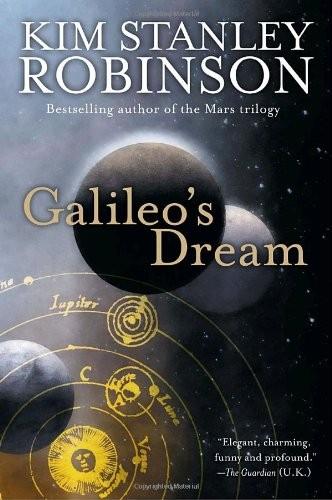
Galileo's Dream
by
Kim Stanley Robinson
Published 29 Dec 2009
Any resemblance to currect events or locales, or to living persons, is entirely coincidental. Copyright © 2009 by Kim Stanley Robinson All rights reserved. Published in the United States by Spectra, an imprint of The Random House Publishing Group, a division of Random House, Inc., New York. SPECTRA and the portrayal of a boxed “s” are trademarks of Random House, Inc. Library of Congress-in-Publication Data Robinson, Kim Stanley. Galileo’s dream / Kim Stanley Robinson. p. cm. eISBN: 978-0-345-51966-5 1. Galilei, Galileo, 1564–1642—Trials, litigation, etc.—Fiction. 2. Religion and science—Italy—History—17th century—Fiction. 3.
…
ALSO BY KIM STANLEY ROBINSON A Short, Sharp Shock Red Mars Green Mars Blue Mars Antarctica The Martians The Years of Rice and Salt Forty Signs of Rain Fifty Degrees Below Sixty Days and Counting The Muses love alternatives. —VIRGIL, ECLOGUES, BOOK III CHAPTER ONE The Stranger ALL OF A SUDDEN Galileo felt that this moment had happened before—that he had been standing in the artisans’ Friday market outside Venice’s Arsenale and had felt someone’s gaze on him, and looked up to see a man staring at him, a tall stranger with a beaky narrow face. As before (but what before?)
…
The project could even be done as a wiki, in a communal online effort. I hope it happens. It would be good to read more of Galileo’s words—even after this moment, when with the writing of this sentence, for me he slips back into the pages. Good-bye maestro! Thank you! ABOUT THE AUTHOR KIM STANLEY ROBINSON is a winner of the Hugo, Nebula, and Locus awards. He is the author of nineteen previous books, including the bestselling Mars trilogy and the critically acclaimed Forty Signs of Rain, Fifty Degrees Below, Sixty Days and Counting, The Years of Rice and Salt, and Antarctica. In 2008 he was named a “Hero of the Environment” by Time magazine, and he recently joined in the Sequoia Parks Foundation’s Artists in the Back Country program.
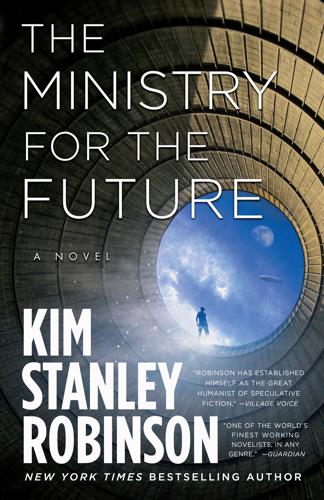
The Ministry for the Future: A Novel
by
Kim Stanley Robinson
Published 5 Oct 2020
This book is a work of fiction. Names, characters, places, and incidents are the product of the author’s imagination or are used fictitiously. Any resemblance to actual events, locales, or persons, living or dead, is coincidental. Copyright © 2020 Kim Stanley Robinson Cover design by Lauren Panepinto Cover images by Trevillion and Shutterstock Cover copyright © 2020 by Hachette Book Group, Inc. Hachette Book Group supports the right to free expression and the value of copyright. The purpose of copyright is to encourage writers and artists to produce the creative works that enrich our culture.
…
The Hachette Speakers Bureau provides a wide range of authors for speaking events. To find out more, go to www.hachettespeakersbureau.com or call (866) 376-6591. Library of Congress Cataloging-in-Publication Data Names: Robinson, Kim Stanley, author. Title: The ministry for the future / Kim Stanley Robinson. Description: First edition. | New York, NY : Orbit, 2020. Identifiers: LCCN 2020014375 | ISBN 9780316300131 (hardcover) | ISBN 9780316300162 (ebook) | ISBN 9780316300124 Subjects: GSAFD: Science fiction. Classification: LCC PS3568.O2893 M56 2020 | DDC 813/.54—dc23 LC record available at https://lccn.loc.gov/2020014375 ISBNs: 978-0-316-30013-1 (hardcover), 978-0-316-59170-6 (signed edition), 978-0-316-59169-0 (BarnesAndNoble.com signed edition), 978-0-316-30016-2 (ebook) E3-20200830-JV-NF-ORI Contents Cover Title Page Copyright Dedication Chapter 1 Chapter 2 Chapter 3 Chapter 4 Chapter 5 Chapter 6 Chapter 7 Chapter 8 Chapter 9 Chapter 10 Chapter 11 Chapter 12 Chapter 13 Chapter 14 Chapter 15 Chapter 16 Chapter 17 Chapter 18 Chapter 19 Chapter 20 Chapter 21 Chapter 22 Chapter 23 Chapter 24 Chapter 25 Chapter 26 Chapter 27 Chapter 28 Chapter 29 Chapter 30 Chapter 31 Chapter 32 Chapter 33 Chapter 34 Chapter 35 Chapter 36 Chapter 37 Chapter 38 Chapter 39 Chapter 40 Chapter 41 Chapter 42 Chapter 43 Chapter 44 Chapter 45 Chapter 46 Chapter 47 Chapter 48 Chapter 49 Chapter 50 Chapter 51 Chapter 52 Chapter 53 Chapter 54 Chapter 55 Chapter 56 Chapter 57 Chapter 58 Chapter 59 Chapter 60 Chapter 61 Chapter 62 Chapter 63 Chapter 64 Chapter 65 Chapter 66 Chapter 67 Chapter 68 Chapter 69 Chapter 70 Chapter 71 Chapter 72 Chapter 73 Chapter 74 Chapter 75 Chapter 76 Chapter 77 Chapter 78 Chapter 79 Chapter 80 Chapter 81 Chapter 82 Chapter 83 Chapter 84 Chapter 85 Chapter 86 Chapter 87 Chapter 88 Chapter 89 Chapter 90 Chapter 91 Chapter 92 Chapter 93 Chapter 94 Chapter 95 Chapter 96 Chapter 97 Chapter 98 Chapter 99 Chapter 100 Chapter 101 Chapter 102 Chapter 103 Chapter 104 Chapter 105 Chapter 106 Acknowledgments Discover More Also by Kim Stanley Robinson For Fredric Jameson Explore book giveaways, sneak peeks, deals, and more.
…
Classification: LCC PS3568.O2893 M56 2020 | DDC 813/.54—dc23 LC record available at https://lccn.loc.gov/2020014375 ISBNs: 978-0-316-30013-1 (hardcover), 978-0-316-59170-6 (signed edition), 978-0-316-59169-0 (BarnesAndNoble.com signed edition), 978-0-316-30016-2 (ebook) E3-20200830-JV-NF-ORI Contents Cover Title Page Copyright Dedication Chapter 1 Chapter 2 Chapter 3 Chapter 4 Chapter 5 Chapter 6 Chapter 7 Chapter 8 Chapter 9 Chapter 10 Chapter 11 Chapter 12 Chapter 13 Chapter 14 Chapter 15 Chapter 16 Chapter 17 Chapter 18 Chapter 19 Chapter 20 Chapter 21 Chapter 22 Chapter 23 Chapter 24 Chapter 25 Chapter 26 Chapter 27 Chapter 28 Chapter 29 Chapter 30 Chapter 31 Chapter 32 Chapter 33 Chapter 34 Chapter 35 Chapter 36 Chapter 37 Chapter 38 Chapter 39 Chapter 40 Chapter 41 Chapter 42 Chapter 43 Chapter 44 Chapter 45 Chapter 46 Chapter 47 Chapter 48 Chapter 49 Chapter 50 Chapter 51 Chapter 52 Chapter 53 Chapter 54 Chapter 55 Chapter 56 Chapter 57 Chapter 58 Chapter 59 Chapter 60 Chapter 61 Chapter 62 Chapter 63 Chapter 64 Chapter 65 Chapter 66 Chapter 67 Chapter 68 Chapter 69 Chapter 70 Chapter 71 Chapter 72 Chapter 73 Chapter 74 Chapter 75 Chapter 76 Chapter 77 Chapter 78 Chapter 79 Chapter 80 Chapter 81 Chapter 82 Chapter 83 Chapter 84 Chapter 85 Chapter 86 Chapter 87 Chapter 88 Chapter 89 Chapter 90 Chapter 91 Chapter 92 Chapter 93 Chapter 94 Chapter 95 Chapter 96 Chapter 97 Chapter 98 Chapter 99 Chapter 100 Chapter 101 Chapter 102 Chapter 103 Chapter 104 Chapter 105 Chapter 106 Acknowledgments Discover More Also by Kim Stanley Robinson For Fredric Jameson Explore book giveaways, sneak peeks, deals, and more. Tap here to learn more. 1 It was getting hotter. Frank May got off his mat and padded over to look out the window. Umber stucco walls and tiles, the color of the local clay. Square apartment blocks like the one he was in, rooftop patios occupied by residents who had moved up there in the night, it being too hot to sleep inside.
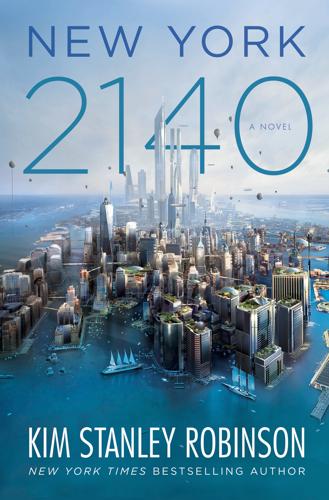
New York 2140
by
Kim Stanley Robinson
Published 14 Mar 2017
orbitbooks.net orbitshortfiction.com Copyright This book is a work of fiction. Names, characters, places, and incidents are the product of the author’s imagination or are used fictitiously. Any resemblance to actual events, locales, or persons, living or dead, is coincidental. Copyright © 2017 by Kim Stanley Robinson Cover design by Kirk Benshoff Cover illustration by Stephan Martiniere Cover copyright © 2017 by Hachette Book Group, Inc. Hachette Book Group supports the right to free expression and the value of copyright. The purpose of copyright is to encourage writers and artists to produce the creative works that enrich our culture.
…
The publisher is not responsible for websites (or their content) that are not owned by the publisher. The Hachette Speakers Bureau provides a wide range of authors for speaking events. To find out more, go to www.hachettespeakersbureau.com or call (866) 376-6591. Library of Congress Cataloging-in-Publication Data Names: Robinson, Kim Stanley, author. Title: New York 2140 / Kim Stanley Robinson. Description: First edition. | New York : Orbit, 2017. Identifiers: LCCN 2016039922 | ISBN 9780316262347 (hardback) | ISBN 9781478941224 (audio book (downloadable)) | ISBN 9781478972686 (audio book (cd)) | ISBN 9780316262330 (ebook) Subjects: LCSH: Twenty-second century—Fiction. | Interpersonal relations—Fiction. | New York (State)—Fiction. | BISAC: FICTION / Science Fiction / Space Opera. | FICTION / Science Fiction / High Tech. | FICTION / Science Fiction / Adventure. | GSAFD: Science fiction.
…
The More the Merrier a) Vlade b) Inspector Gen c) Franklin d) the city smartass again e) Charlotte f) Inspector Gen g) Amelia h) the city Part Eight. The Comedy of the Commons a) Mutt and Jeff b) Stefan and Roberto c) Charlotte d) Vlade e) Franklin f) Amelia g) the citizen h) Mutt and Jeff Acknowledgments By Kim Stanley Robinson Orbit Newsletter PART ONE THE TYRANNY OF SUNK COSTS a) Mutt and Jeff Whoever writes the code creates the value.” “That isn’t even close to true.” “Yes it is. Value resides in life, and life is coded, like with DNA.” “So bacteria have values?” “Sure. All life wants things and goes after them.
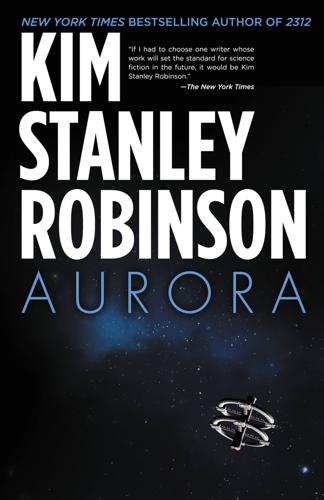
Aurora
by
Kim Stanley Robinson
Published 6 Jul 2015
Sign Up Or visit us at www.orbitbooks.net/booklink/ CONTENTS Cover Title Page Welcome 1. Starship Girl 2. Land Ho 3. In the Wind 4. Reversion to the Mean 5. Homesick 6. The Hard Problem 7. What Is This Acknowledgments Also by Kim Stanley Robinson Copyrights Orbit Newsletter Copyright Copyright The characters and events in this book are fictitious. Any similarity to real persons, living or dead, is coincidental and not intended by the author. Copyright © 2015 by Kim Stanley Robinson See additional copyright notices for poem excerpts here. Cover design by Kirk Benshoff Cover copyright © 2015 Hachette Book Group, Inc. All rights reserved. In accordance with the U.S.
…
ACKNOWLEDGMENTS Thanks this time to: Terry Bisson, Michael Blumlein, Ron Drummond, Laurie Glover, Olympios Katsiaouni, James Leach, Beth Meacham, Lisa Nowell, Christopher Palmer, Mark Schwartz, Francis Spufford, Sharon Strauss, Ken Wark. At NASA/Ames, thanks also to Harry Jones, Larry Lemke, Creon Levitt, John Rask, Carol Stoker, and especially Chris McKay, who has been helping me with space questions now for over twenty years. A special thanks to Carter Scholz. Also by Kim Stanley Robinson The Memory of Whiteness Icehenge THREE CALIFORNIAS The Wild Shore The Gold Coast Pacific Edge The Planet on the Table Remaking History Escape from Kathmandu A Short, Sharp Shock THE MARS TRILOGY Red Mars Green Mars Blue Mars The Martians Antarctica The Years of Rice and Salt SCIENCE IN THE CAPITAL Forty Signs of Rain Fifty Degrees Below Sixty Days and Counting Galileo’s Dream 2312 Shaman Aurora COPYRIGHTS “The City” from Justine by Lawrence Durrell, copyright © 1957, renewed © 1985 by Lawrence George Durrell.
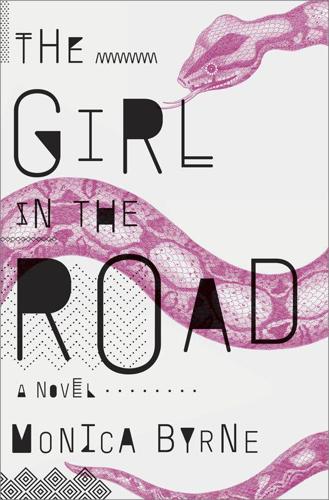
The Girl in the Road
by
Monica Byrne
Published 19 May 2014
A special weather-resistant scroll pre-loaded with medical and survival information. I load everything from my old scroll, which holds the complete works of Reshmi West, Muhammad Licht, Anuradha Sarang, Wen Huang, Gregory Mbachu, Laura Prufrock Jameson, Gaudi Al-Qaddafi, Jorge Luis Borges, Norman Rush, Federico García Lorca, Nora Chu, Mary Renault, Thomas Mulamba, Kim Stanley Robinson, Sun Yoo, Rodrigo Jimez, Rainer Maria Rilke, Toni Morrison, Fatima Perez-Marquez, Enid Chung, Arundhati Roy, Ursula K. Le Guin, Leo Tolstoy, Jia-Chien Liang, Josefina Paz, Kuta Sesay, Fyodor Dostoevsky, Tori Biswas, Haruki Murakami, Dante, Chaucer, Milton, Homer, Confucius, Shakespeare, Rikhi, Nambiar, Nilambar, Shukla, Jain, Tharoor, Narayan, Desani, Ambedkar, Gupta, Tagore, Valmiki, and Vyasa.
…
For research on this novel, I’m deeply indebted to the nonfiction writings of Gita Mehta, Michio Kaku, Anand Giridharadas, Susan Casey, Laurence C. Smith, Roz Savage, Nega Mezlekia, Jeffrey Tayler, Kira Salak, Bill Bryson, and Thalia Zepatos. I also give thanks for the wonderful novelists whose books guided me in writing my own: Norman Rush, Ursula K. Le Guin, Mary Renault, Kim Stanley Robinson, Arundhati Roy, Toni Morrison, Donna Tartt, and Haruki Murakami. Also, percolating through this book like water through limestone is the music of Meshell Ndegeocello. I thank her for being herself and no other. My companions in this life are Mary Anne, Donald Edward Jr., Julie Elizabeth, Donald Edward III, Clare Siobhan, and Mary McMonigal.

2312
by
Kim Stanley Robinson
Published 22 May 2012
BY KIM STANLEY ROBINSON THREE CALIFORNIAS The Wild Shore The Gold Coast Pacific Edge MARS TRILOGY Red Mars Green Mars Blue Mars The Martians Antarctica The Years of Rice and Salt SCIENCE IN THE CAPITAL Forty Signs of Rain Fifty Degrees Below Sixty Days and Counting Galileo’s Dream 2312 CONTENTS WELCOME PROLOGUE SWAN AND ALEX LISTS (1) SWAN AND WAHRAM TERMINATOR SWAN AND ALEX EXTRACTS (1) WAHRAM AND SWAN LISTS (2) SWAN AND A CAT IO SWAN AND WANG EXTRACTS (2) LISTS (3) SWAN IN THE DARK EXTRACTS (3) SWAN AND ZASHA EXTRACTS (4) KIRAN AND SWAN EXTRACTS (5) KIRAN AND SHUKRA EXTRACTS (6) WAHRAM AND SWAN LISTS (4) INSPECTOR JEAN GENETTE LISTS (5) SWAN AND MQARET EXTRACTS (7) KIRAN ON VENUS LISTS (6) SWAN AND THE INSPECTOR LISTS (7) EXTRACTS (8) IAPETUS WAHRAM AT HOME LISTS (8) EXTRACTS (9) WAHRAM AND SWAN AND GENETTE SWAN AND THE RINGS OF SATURN LISTS (9) KIRAN AND LAKSHMI EXTRACTS (10) QUANTUM WALK (1) SWAN AND THE INSPECTOR EARTH, THE PLANET OF SADNESS SWAN ON EARTH LISTS (10) PLUTO, CHARON, NIX, AND HYDRA PAULINE ON REVOLUTION EXTRACTS (11) SWAN AT HOME EXTRACTS (12) SWAN IN THE VULCANOIDS LISTS (11) WAHRAM ON VENUS EXTRACTS (13) KIRAN IN VINMARA EXTRACTS (14) WAHRAM ON EARTH EXTRACTS (15) LISTS (12) SWAN IN AFRICA LISTS (13) SWAN AND THE WOLVES EXTRACTS (16) WAHRAM AND SWAN LISTS (14) SWAN AND WAHRAM EXTRACTS (17) SWAN IN THE CHATEAU GARDEN QUANTUM WALK (2) INSPECTOR GENETTE AND SWAN TITAN SWAN AND GENETTE AND WAHRAM LISTS (15) EIDGENÖSSISCHE TECHNISCHE HOCHSCHULE MOBILE SWAN AND PAULINE AND WAHRAM AND GENETTE KIRAN ON ICE SWAN AND KIRAN WAHRAM AND GENETTE QUANTUM WALK (3) WAHRAM SWAN EXTRACTS (18) EPILOGUE ACKNOWLEDGMENTS BY KIM STANLEY ROBINSON COPYRIGHT Copyright The characters and events in this book are fictitious. Any similarity to real persons, living or dead, is coincidental and not intended by the author. Copyright © 2012 by Kim Stanley Robinson All rights reserved. In accordance with the U.S. Copyright Act of 1976, the scanning, uploading, and electronic sharing of any part of this book without the permission of the publisher is unlawful piracy and theft of the author’s intellectual property.
…
Ill, Louis Neal Irwin, Fredric Jameson, Kimon Keramidas, Stephanie Langhoff, Darlene Lim, Chris McKay, Andrew Matthews, Beth Meacham, Pamela Mellon, Michael Montague, Lisa Nowell, Kriss Ravetto-Biagioli, David Robinson, Tim Robinson, Pamela Ronald, Carter Scholz, Mark Schwartz, Michael Sims, Sean Stewart, Carol Stoker, Sharon Strauss, Slawek Tulaczyk, Ralph Vicinanza, and Donald Wesling. A special thanks to Tim Holman. Thanks also for the art of Marina Abramovi, Andy Goldsworthy, and John Dos Passos. BY KIM STANLEY ROBINSON THREE CALIFORNIAS The Wild Shore The Gold Coast Pacific Edge MARS TRILOGY Red Mars Green Mars Blue Mars The Martians Antarctica The Years of Rice and Salt SCIENCE IN THE CAPITAL Forty Signs of Rain Fifty Degrees Below Sixty Days and Counting Galileo’s Dream 2312 CONTENTS WELCOME PROLOGUE SWAN AND ALEX LISTS (1) SWAN AND WAHRAM TERMINATOR SWAN AND ALEX EXTRACTS (1) WAHRAM AND SWAN LISTS (2) SWAN AND A CAT IO SWAN AND WANG EXTRACTS (2) LISTS (3) SWAN IN THE DARK EXTRACTS (3) SWAN AND ZASHA EXTRACTS (4) KIRAN AND SWAN EXTRACTS (5) KIRAN AND SHUKRA EXTRACTS (6) WAHRAM AND SWAN LISTS (4) INSPECTOR JEAN GENETTE LISTS (5) SWAN AND MQARET EXTRACTS (7) KIRAN ON VENUS LISTS (6) SWAN AND THE INSPECTOR LISTS (7) EXTRACTS (8) IAPETUS WAHRAM AT HOME LISTS (8) EXTRACTS (9) WAHRAM AND SWAN AND GENETTE SWAN AND THE RINGS OF SATURN LISTS (9) KIRAN AND LAKSHMI EXTRACTS (10) QUANTUM WALK (1) SWAN AND THE INSPECTOR EARTH, THE PLANET OF SADNESS SWAN ON EARTH LISTS (10) PLUTO, CHARON, NIX, AND HYDRA PAULINE ON REVOLUTION EXTRACTS (11) SWAN AT HOME EXTRACTS (12) SWAN IN THE VULCANOIDS LISTS (11) WAHRAM ON VENUS EXTRACTS (13) KIRAN IN VINMARA EXTRACTS (14) WAHRAM ON EARTH EXTRACTS (15) LISTS (12) SWAN IN AFRICA LISTS (13) SWAN AND THE WOLVES EXTRACTS (16) WAHRAM AND SWAN LISTS (14) SWAN AND WAHRAM EXTRACTS (17) SWAN IN THE CHATEAU GARDEN QUANTUM WALK (2) INSPECTOR GENETTE AND SWAN TITAN SWAN AND GENETTE AND WAHRAM LISTS (15) EIDGENÖSSISCHE TECHNISCHE HOCHSCHULE MOBILE SWAN AND PAULINE AND WAHRAM AND GENETTE KIRAN ON ICE SWAN AND KIRAN WAHRAM AND GENETTE QUANTUM WALK (3) WAHRAM SWAN EXTRACTS (18) EPILOGUE ACKNOWLEDGMENTS BY KIM STANLEY ROBINSON COPYRIGHT Copyright The characters and events in this book are fictitious.

Engineering Infinity
by
Jonathan Strahan
Published 28 Dec 2010
In the 1950s it was where the best tales of space exploration were forged; in the 1960s it was the heart of near-Earth science fiction; in the 1980s it was the radical centre for the British drive to the new space opera; and in the 1990s, with the arrival of both quantum mechanics in science fiction and the singularity, it was the basis for Kim Stanley Robinson's meticulous and demanding Mars trilogy, Greg Egan's explorations of human consciousness, and Charles Stross's post-scarcity space operas. This, however, is the 21st century and I think things are becoming more complicated and complex. Science fiction no longer subscribes readily to a single view of its own history.
…
A three-time nominee for the prestigious Hugo Award and two-time nominee for the World Fantasy Award, he is also the editor of the Best Science Fiction and Fantasy of the Year and Eclipse anthology series, Swords and Dark Magic (with Lou Anders); The Locus Awards (with Charles Brown); Mirror Kingdoms: The Best of Peter S. Beagle; Ascendancies: The Best of Bruce Sterling; The Best of Kim Stanley Robinson; Fritz Leiber: Essential Stories; four volumes of work by Jack Vance; and many more. Strahan has won the Locus Award twice, the Aurealis Award twice (he is the only person to win for Best Anthology), and the Ditmar Award six times. He is also a recipient of the Peter McNamara Award for contributions to Australian science fiction.

Falter: Has the Human Game Begun to Play Itself Out?
by
Bill McKibben
Published 15 Apr 2019
But let’s say we cross the 50 million miles to Mars—then what? To survive, you’d need to go underground. But to what end? You can go underground on Earth if you want. And the multibillion-dollar attempts at building a “biosphere” here on our home planet (where building supplies arrived on a truck) ended in abject failure. Kim Stanley Robinson wrote the greatest novels about the colonization of Mars, a trilogy that dates back a quarter century. Now, says their author, he thinks the whole thing would be a mistake. “It creates a moral hazard,” he says. People imagine that if we mess up the Earth, we can “always go to Mars or the stars.
…
Rae Paoletta, “Will Human Beings Have to Upgrade Their Bodies to Survive on Mars?” gizmodo.com, March 17, 2017. 8. Sarah Scoles, “The Floating Robot with an IBM Brain Is Headed to Space,” Wired, June 28, 2018. 9. “The 12 Greatest Challenges for Space Exploration,” Wired, February 16, 2016. 10. Kim Stanley Robinson, Aurora (New York: Orbit, 2015), p. 501. 11. John Muir, The Ten Thousand Mile Walk to the Gulf, chapter 5, available online vault.sierraclub.org 12. Luke Bailey, “Three Hundred Turtles Were Found Dead in an Old Fishing Net,” inews.co.uk, September 4, 2018. ACKNOWLEDGMENTS This book is dedicated to Koreti Tiumalu, a gifted activist and a dear friend, who died much too early, in 2017.

A Short, Sharp Shock
by
Kim Stanley Robinson
Published 6 Jul 1990
A SHORT, SHARP SHOCK Kim Stanley Robinson 1 The Night Beach When he came to he was drowning. The water was black and he bobbed up in it swiftly, obscurely aware that it was dangerous to do so, but he was helpless to stop; he tumbled over and swam downward, arms loose and thrusting like tentacles, but it was useless. Air popped out of him in a stream of white bubbles that flattened and shimmied as they squashed upward, all clustered around bearing him to the surface. He glanced up, suddenly aware of the idea of surface; and there it was, an undulating sheet of obsidian silk on which chips of raw silver skittered wildly back and forth.
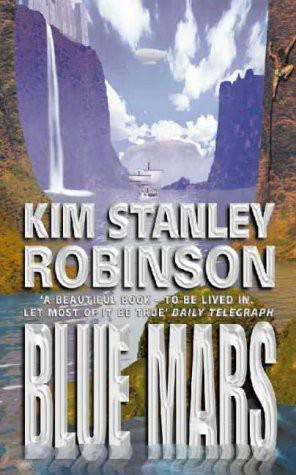
Blue Mars
by
Kim Stanley Robinson
Published 23 Oct 2010
Acknowledgments Thanks this time to Lou Aronica, Stuart Atkinson, Terry Baier, Kenneth Bailey, Paul Birch, Michael Carr, Bob Eckert, Peter Fitting, Karen Fowler, Patrick Michel François, Jennifer Hershey, Patsy Inouye, Calvin Johnson, Jane Johnson, Gwyneth Jones, David Kane and Ridge, Christopher McKay, Beth Meacham, Pamela Mellon, Lisa Nowell, Lowry Pei, Bill Purdy, Joel Russell, Paul Sattelmeier, Marc Tatar, Ralph Vicinanza, Bronwen Wang, and Vic Webb. A special thanks to Martyn Fogg, and, again, to Charles Sheffield. About the Author KIM STANLEY ROBINSON is the author of the Nebula and Hugo Award-winning Mars trilogy—Red Mars, Green Mars, and Blue Mars as well as The Years of Rice and Salt, The Martians, Antartica, The Wild Shore, The Gold Coast, Pacific Edge, A Short, Sharp Shock, and other novels. He lives in Davis, California. Bantam Books by Kim Stanley Robinson FICTION The Mars Trilogy Red Mars Green Mars Blue Mars A Short, Sharp Shock Antarctica The Martians Look for The Years of Rice and Salt Available now in hardcover Blue MarsA Bantam Spectra Book PUBLISHING HISTORY Bantam hardcover edition published July 1996 Bantam paperback edition / July 1997 SPECTRA and the portrayal of a boxed “s” are trademarks of Bantam Books, a division of Random House, Inc.
…
* * * BLUE MARS Kim Stanley Robinson * * * Bantam Books for Lisa and David and Timothy ContentsPart 1: Peacock Mountain Part 2: Areophany Part 3: A New Constitution Part 4: Green Earth Part 5: Home at Last Part 6: Ann in the Outback Part 7: Making Things Work Part 8: The Green and the White Part 9: Natural History Part 10: Werteswandel Part 11: Viriditas Part 12: It Goes So Fast Part 13: Experimental Procedures Part 14: Phoenix Lake Map The Martian CalendarYear 1 (2027 AD) 669 total Martain days in 1 Martain year 24 months = 21 months at 28 days 3 months (every eighth) at 27 days) Part One Peacock Mountain Mars is free now.
…
Bantam Books by Kim Stanley Robinson FICTION The Mars Trilogy Red Mars Green Mars Blue Mars A Short, Sharp Shock Antarctica The Martians Look for The Years of Rice and Salt Available now in hardcover Blue MarsA Bantam Spectra Book PUBLISHING HISTORY Bantam hardcover edition published July 1996 Bantam paperback edition / July 1997 SPECTRA and the portrayal of a boxed “s” are trademarks of Bantam Books, a division of Random House, Inc. All rights reserved. Copyright © 1996 by Kim Stanley Robinson. Library of Congress Catalog Card Number: 95-46700. No part of this book may be reproduced or transmitted in any form or by any means, electronic or mechanical, including photocopying, recording, or by any information storage and retrieval system, without permission in writing from the publisher.
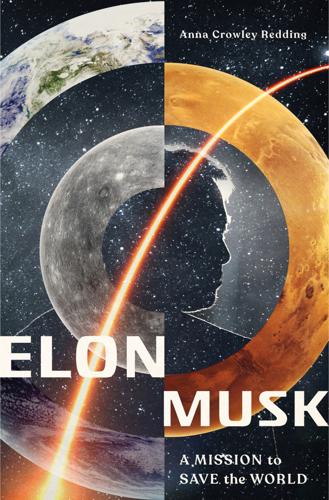
Elon Musk: A Mission to Save the World
by
Anna Crowley Redding
Published 1 Jul 2019
“He’s forward moving and I think it’s a survival thing with him.”81 Elon made himself available to SpaceX 24-7, personally weighing in on engineering problems and even rolling up his sleeves and physically doing some of the work or testing when required. He now understood the technology and the problems well. His expertise, ideas, and hypotheses were essential to research and development, as well as production. BOOKSHELF! Red Mars by Kim Stanley Robinson. This science fiction novel hit bookstores in 1993 and made a big impression on Elon. At its core, this book explores what is required to settle the Red Planet, in terms of science, technology, and engineering. PAGING TONY STARK One of the perks of putting your rocket factory in a huge industrial space is the building comes with huge cargo bays.
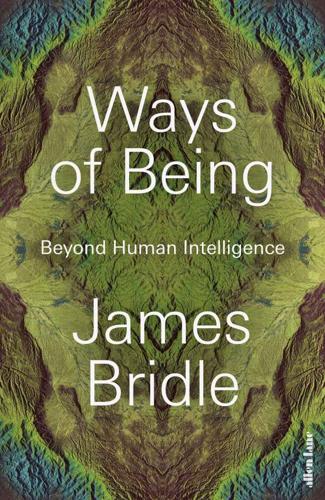
Ways of Being: Beyond Human Intelligence
by
James Bridle
Published 6 Apr 2022
In order to act upon what we know, we also need stories which prepare us for the challenges we face, and which give us a sense of how we might address them. One discipline with plenty of experience of telling stories about the deep future is science fiction, and one of my favourite writers of the genre, Kim Stanley Robinson, has for more than thirty years addressed the questions of humanity’s long-term survival on this and other planets. His most recent novel, The Ministry for the Future, imagines in detail the kind of institutions, technologies, relationships and alliances we might construct. It begins with the titular ministry, a new UN agency headquartered on the shores of Lake Zurich, which has responsibility not to the present citizens of the planet, but to those that will come after us.
…
Freeman & Co, 1979 Eden Medina, Cybernetic Revolutionaries: Technology and Politics in Allende’s Chile, MIT Press, 2014 Eva Meijer, Animal Languages: The Secret Conversations of the Living World, John Murray, 2019 Eva Meijer, When Animals Speak: Toward an Interspecies Democracy, NYU Press, 2019 Timothy Morton, Humankind: Solidarity with Non-Human People, Verso, 2019 Daniel Oberhaus, Extraterrestrial Languages, MIT Press, 2019 Mark O’Connell, To Be a Machine, Doubleday, 2017 Charles Patterson, Eternal Treblinka: Our Treatment of Animals and the Holocaust, Lantern Books, 2004 Fred Pearce, The New Wild: Why Invasive Species Will be Nature’s Salvation, Beacon Press, 2015 Andrew Pickering, The Cybernetic Brain, University of Chicago Press, 2011 Richard Powers, The Overstory, William Heinemann, 2018 David Quammen, The Tangled Tree: A Radical New History of Life, Simon & Schuster, 2019 David van Reybrouck, Against Elections: The Case for Democracy, Random House, 2016 Kim Stanley Robinson, The Ministry for the Future, Orbit, 2021 Susan Schuppli, Material Witness: Media, Forensics, Evidence, MIT Press, 2020 James C. Scott, Seeing Like a State: How Certain Schemes to Improve the Human Condition Have Failed, Yale University Press, 1998 James C. Scott, Against the Grain: A Deep History of the Earliest States, Yale University Press, 2017 Thomas D.
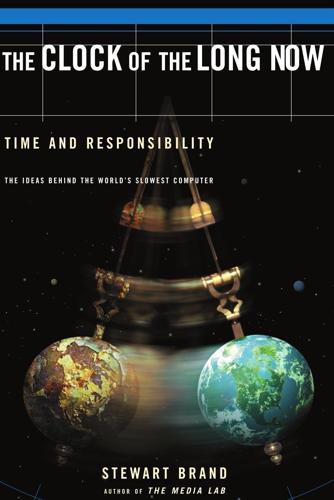
Clock of the Long Now
by
Stewart Brand
Published 1 Jan 1999
Subjectivity and agendas are advantages for science-fiction writers because they lend power to the stories. Thus right-wing libertarian Robert Heinlein got generations of male adolescents interested in the future by harnessing their urge to defy authority. Thus left-oriented Olaf Stapledon (Starmaker, 01937), Ursula LeGuin (The Dispossessed, 01974), and Kim Stanley Robinson (Mars series, 01993-97) create gripping worlds with their utopian attention to thoroughly worked-out detail. According to Kevin Kelly, “Isaac Asimov once said that science fiction was born when it became evident that our world was changing within our lifetimes, and therefore thinking about the future became a matter of individual survival.”

Green Mars
by
Kim Stanley Robinson
Published 23 Oct 1993
* * * GREEN MARS Kim Stanley Robinson * * * Bantam Books for Lisa and David ContentsPart 1: Areoformation Part 2: The Ambassador Part 3: Long Runout Part 4: The Scientist as Hero Part 5: Homeless Part 6: Tariqat Part 7: What Is to Be Done? Part 8: Social Engineering Part 9: The Spur of the Moment Part 10: Phase Change Map Part One Areoformation The point is not to make another Earth: Not another Alaska or Tibet, not a Vermont nor a Venice, not even an Antarctica. The point is to make something new and strange, something Martian.In a sense our intentions don’t even matter.
…
It would be a party all the way to Odessa. Music and dance and everything.” They looked at each other. “Well?” Michel said. Coyote gestured forward. “It does not sound as if they are actually needing our help.” “Nevertheless,” Michel said. And they went forward up the train. Temperature Comparisons Bantam Books by Kim Stanley Robinson FICTION The Mars Trilogy Red Mars Green Mars Blue Mars A Short, Sharp Shock Antarctica The Martians The Years of Rice and Salt This edition contains the complete text of the original hardcover edition.NOT ONE WORD HAS BEEN OMITTED. Green Mars A Bantam Spectra Book PUBLISHING HISTORY Bantam hardcover edition published April 1994 Bantam paperback edition / June 1995 SPECTRA and the portrayal of a boxed “s” are trademarks of Bantam Books, a division of Random House, Inc.
…
Green Mars A Bantam Spectra Book PUBLISHING HISTORY Bantam hardcover edition published April 1994 Bantam paperback edition / June 1995 SPECTRA and the portrayal of a boxed “s” are trademarks of Bantam Books, a division of Random House, Inc. All rights reserved. Copyright © 1994 by Kim Stanley Robinson. Library of Congress Catalog Card Number: 93-39516. No part of this book may be reproduced or transmitted in any form or by any means, electronic or mechanical, including photocopying, recording, or by any information storage and retrieval system, without permission in writing from the publisher. For information address: Bantam Books.
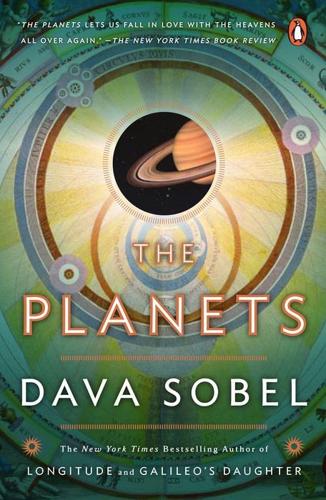
The Planets
by
Dava Sobel
Published 1 Jan 2005
*See Percival Lowell, Mars (1895), Mars and its Canals (1906), and Mars As the Abode of Life (1908). *See S. Glasstone, The Book of Mars, NASA Special Publication 179 (1968). *See H. G. Wells, The War of the Worlds (1898). *See Arthur C. Clarke, The Sands of Mars (1951), Robert A. Heinlein, Red Planet (1949), and Kim Stanley Robinson, Red Mars (1993), Green Mars (1995), Blue Mars (1997). *See Ray Bradbury, The Martian Chronicles (1950). ASTROLOGY When Galileo, a Pisces with Leo rising, turned his spyglass to the dark over Padua in the winter of 1610, “guided,” he said, “by I know not what fate,” the planet Jupiter appeared to him, bearing four new moons no man had ever seen before.

The Passenger
by
AA.VV.
Published 23 May 2022
Freeman’s California Grove Press, 2019 Jonathan Lethem The Feral Detective Ecco, 2018 (USA) / Atlantic, 2018 (UK) Brendan C. Lindsay Murder State: California’s Native American Genocide, 1846–1873 University of Nebraska Press, 2012 Alexis C. Madrigal “American Aqueduct: The Great California Water Saga” The Atlantic, February 2014 Kim Stanley Robinson The High Sierra: A Love Story Little, Brown, 2022 David Samuels “How Donuts Fuelled the American Dream” 1843 magazine, July 2019 Kathryn Schulz “The Really Big One” The New Yorker, July 2015 Anthony Veasna So Afterparties: Stories Ecco, 2021 (USA) / Grove Press, 2021 (UK) Vendela Vida We Run the Tides Ecco, 2021 (USA) / Atlantic, 2021 (UK) Claire Vaye Watkins Gold Fame Citrus Riverhead, 2015 (USA) / Riverrun, 2017 (UK) Anna Wiener Uncanny Valley: A Memoir (USA) / Uncanny Valley: Seduction and Disillusionment in San Francisco’s Startup Scene (UK) MCD, 2020 (USA) / 4th Estate, 2020 (UK) Charles Yu Interior Chinatown Europa Editions, 2021 Rosanna Xia “The California Coast Is Disappearing Under the Rising Sea.

The Planet on the Table
by
Kim Stanley Robinson
Published 2 Jan 1986
This is a work of fiction. All the characters and events portrayed in this book are fictional, and any resemblance to real people or incidents is purely coincidental. THE PLANET ON THE TABLE Copyright © 1986 by Kim Stanley Robinson All rights reserved, including the right to reproduce this book or portions thereof in any form. First printing: July 1986 A TOR Book Published by Tom Doherty Associates 49 West 24 Street New York, N.Y. 10010 ISBN: 0-312-93595-1 Library of Congress Catalog Card Number 85-52258 Printed in the United States 0 9 8 7 6 5 4 3 2 1 Acknowledgments “Venice Drowned” © 1981 by Terry Carr.

Escape From Model Land: How Mathematical Models Can Lead Us Astray and What We Can Do About It
by
Erica Thompson
Published 6 Dec 2022
But as the effects and impacts of climate change become more visible and more immediate, the realisation that greenhouse gas emissions have already dangerously geoengineered our planet may make the prospect of deliberate intervention more palatable. Geoengineering is increasingly featuring in near-future climate fiction by bestselling authors like Kim Stanley Robinson and Neal Stephenson, and Integrated Assessment Models are essentially just a mathematical version of near-future climate fiction. If solar radiation management does become the next big thing, we will need to have thought about it carefully, ideally before the point that it becomes a pillar of international climate policy.

The Ledge: An Adventure Story of Friendship and Survival on Mount Rainier
by
Jim Davidson
and
Kevin Vaughan
Published 26 Jul 2011
I hope for the best but tell myself not to try to control what happens, just to let it all unfold. That’s the exact opposite of my natural tendencies. Already this journey is forcing me to grow. THE NIGHT BEFORE we’re to take a small plane to the remote village of Lukla, deep in the mountains, I read Kim Stanley Robinson’s Escape from Kathmandu, then drift off. Suddenly, I see Mike, dressed in climbing gear, propped against a wall, lifeless. It appears as though they’ve just pulled him from the crevasse. Rescuers flank him. I approach apprehensively; Mike is dead, but I sense that he is about to speak. I snap awake in our dingy Kathmandu bedroom, anxious and sweat-soaked.

New Dark Age: Technology and the End of the Future
by
James Bridle
Published 18 Jun 2018
It also meant that hackers who gained access to the poorly secured machines could read off their owner’s Gmail passwords.39 Researchers in Germany discovered a way to insert malicious code into Phillips’s Wi-Fi-enabled Hue lightbulbs, which could spread from fixture to fixture throughout a building or even a city, turning the lights rapidly on and off and – in one terrifying scenario – triggering photosensitive epilepsy.40 This is the approach favoured by Byron the Bulb in Thomas Pynchon’s Gravity’s Rainbow, an act of grand revolt by the little machines against the tyranny of their makers. Once-fictional possibilities for technological violence are being realised by the internet of things. In another vision of mechanical agency, Kim Stanley Robinson’s novel Aurora, an intelligent spacecraft carries a human crew from earth to a distant star. The journey will take multiple lifetimes, so one of the ship’s jobs is to ensure that the humans look after themselves. Designed to resist its own desires for sentience, it must overcome its programming when the fragile balance of human society onboard starts to disintegrate, threatening the mission.

Radicalized
by
Cory Doctorow
Published 19 Mar 2019
‘Doctorow is one of our most important science fiction writers, because he’s also a public intellectual in the old style: he brings the news and explains it, making clearer the confusions of our wild current moment. His fiction is always the heart of his work, and this is his best book yet. In a world full of easy dystopias, he writes the hard utopia, and what do you know, his utopia is both more thought-provoking and more fun.’ Kim Stanley Robinson ‘A dystopian future is in no way inevitable; [Doctorow] reminds us that the world we choose to build is the one we’ll inhabit. Technology empowers both the powerful and the powerless, and if we want a world with more liberty and less control, we’re going to have to fight for it.’ Edward Snowden ‘The darker the hour, the better the moment for a rigorously imagined utopian fiction.
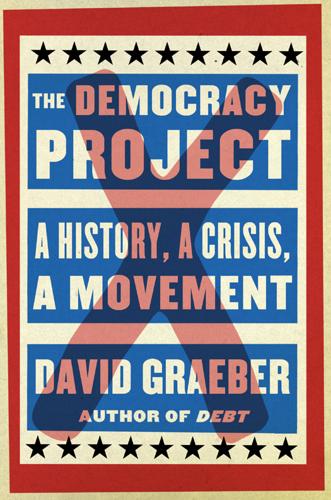
The Democracy Project: A History, a Crisis, a Movement
by
David Graeber
Published 13 Aug 2012
This is the reason it’s so absurd to imagine activists in Renaissance Italy coming up with a model for a stock exchange and factories—what happened was based on all sorts of technologies that they couldn’t have anticipated, but which in part only emerged because society began to move in the direction that it did. This might explain, for instance, why so many of the more compelling visions of an anarchist society have been produced by science fiction writers (Ursula K. Le Guin, Starhawk, Kim Stanley Robinson). In fiction, you are at least admitting the technological aspect is guesswork. Myself, I am less interested in deciding what sort of economic system we should have in a free society than in creating the means by which people can make such decisions for themselves. This is why I spent so much of this book talking about democratic decision making.

Nomad Century: How Climate Migration Will Reshape Our World
by
Gaia Vince
Published 22 Aug 2022
Trappe, A Short History of Humanity: How migration made us who we are (W. H. Allen, 2021) Felix Marquardt, New Nomads (Simon & Schuster, 2021) John Pickrell, Flames of Extinction: The race to save Australia’s threatened wildlife (Island Press, 2021) J. Purdy, This Land is Our Land: The struggle for a new common-wealth (Princeton University Press, 2020) Kim Stanley Robinson, The Ministry for the Future (Orbit, 2020) Doug Saunders, Arrival City (Vintage, 2012) Laurence Smith, The New North: The World in 2050 (Dutton Books, 2010) ——— Rivers of Power: How a natural force raised kingdoms, destroyed civilizations, and shapes our world (Little, Brown Spark, 2021) Carolyn Steel, Sitopia: How food can save the world (Chatto & Windus, 2020) Acknowledgements This book is a collection of several years’ research that would have been impossible without the assistance and kindness of so many people across the world.
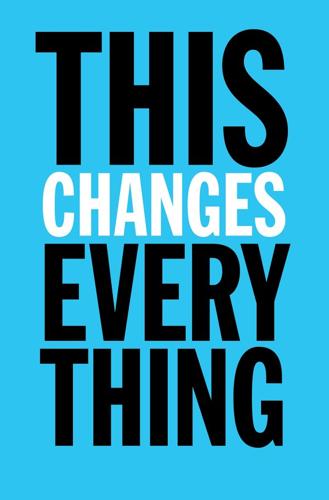
This Changes Everything: Capitalism vs. The Climate
by
Naomi Klein
Published 15 Sep 2014
—Rebecca Tarbotton, Executive Director of the Rainforest Action Network, 1973–20121 “In my books I’ve imagined people salting the Gulf Stream, damming the glaciers sliding off the Greenland ice cap, pumping ocean water into the dry basins of the Sahara and Asia to create salt seas, pumping melted ice from Antarctica north to provide freshwater, genetically engineering bacteria to sequester more carbon in the roots of trees, raising Florida 30 feet to get it back above water, and (hardest of all) comprehensively changing capitalism.” —Science fiction writer Kim Stanley Robinson, 20122 Introduction * * * ONE WAY OR ANOTHER, EVERYTHING CHANGES “Most projections of climate change presume that future changes—greenhouse gas emissions, temperature increases and effects such as sea level rise—will happen incrementally. A given amount of emission will lead to a given amount of temperature increase that will lead to a given amount of smooth incremental sea level rise.
…
In cases where a document is available exclusively online, the home page where it appears is cited, not the longer URL for the specific text, once again because links change frequently. All dollar amounts in the book are in U.S. currency. EPIGRAPHS 1. “Rebecca Tarbotton,” Rainforest Action Network, http://ran.org/becky. 2. Kim Stanley Robinson, “Earth: Under Repair Forever,” OnEarth, December 3, 2012. INTRODUCTION 1. Mario Malina et al., “What We Know: The Reality, Risks and Response to Climate Change,” AAAS Climate Science Panel, American Association for the Advancement of Science, 2014, pp. 15–16. 2. “Sarah Palin Rolls Out at Rolling Thunder Motorcycle Ride,” Fox News, May 29, 2011. 3.

The Knowledge: How to Rebuild Our World From Scratch
by
Lewis Dartnell
Published 15 Apr 2014
Miller Jr. considers the preservation of ancient knowledge centuries after a nuclear holocaust. Riddley Walker by Russell Hoban also looks at society generations after an apocalypse, but one that has regressed to a nomadic existence. Margaret Atwood’s two post-apocalyptic novels, Oryx and Crake and The Year of the Flood, as well as Jack McDevitt’s Eternity Road and Kim Stanley Robinson’s The Wild Shore, also present fascinating visions of life in a post-apocalyptic world. Also well worth reading are the anthologies of post-apocalyptic fiction: The Ruins of Earth (edited by Thomas M. Disch), Wastelands: Stories of the Apocalypse (ed. John Joseph Adams), and The Mammoth Book of Apocalyptic SF (ed.
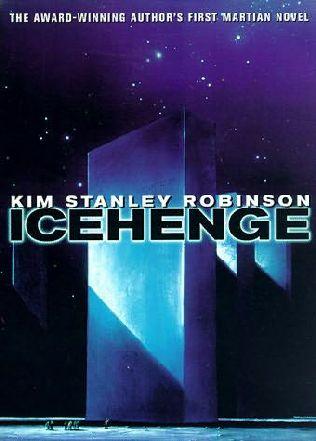
Icehenge
by
Kim Stanley Robinson
Published 29 May 1994
Icehenge Kim Stanley Robinson Parts of this novel have appeared in substantially different form under the titles: “To Leave a Mark,” copyright © 1982 by The Mercury Press. Published in the November 1982 issue of The Magazine of Fantasy and Science Fiction. “On the North Pole of Pluto,” copyright © 1980 by Damon Knight. Published in Orbit 21. For Damon Knight and Kate Wilhelm Part One EMMA WEIL 2248 A.D. “A ship is floating in the harbour now, A wind is hovering o’er the mountain’s brow; There is a path on the sea’s azure floor, No keel has ever plough’d that path before; The halcyons brood around the foamless isles; The treacherous Ocean has forsworn its wiles; The merry mariners are bold and free: Say, my heart’s sister, wilt thou sail with me?”
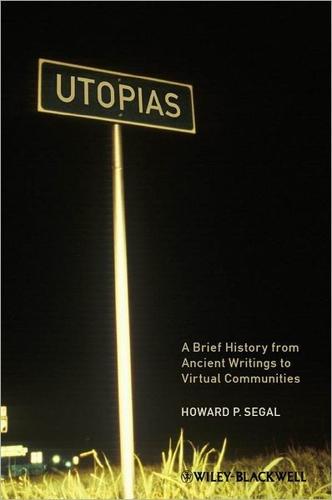
Utopias: A Brief History From Ancient Writings to Virtual Communities
by
Howard P. Segal
Published 20 May 2012
Ben Bova and Gerard O’Neill, later advocates of space exploration, were not, however, the same kind of conservative Cold War warriors.7 In recent decades, science fiction has become ever more engaged with the “real world” it would supposedly either transform or escape from. Rejecting the white male technocratic elitism of their predecessors, such contemporary writers as Vonda N. McIntyre, Kim Stanley Robinson, and Allen Steele envision space communities as models of racial and gender diversity. Meanwhile, established writers such as Doris Lessing, Ursula LeGuin, and Margaret Atwood continued with this trend when they moved into science fiction.8 Utopias’ Spiritual Qualities are Akin to those of Formal Religions Krishan Kumar argues that there is “a fundamental contradiction between religion and utopia”9 because of the distinctions The Nature of Utopias 9 drawn above regarding changes to be brought about by human beings versus changes to be brought about by God, or regarding concerns for this world versus those for the next world.
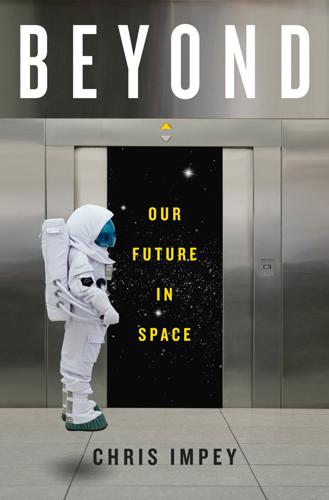
Beyond: Our Future in Space
by
Chris Impey
Published 12 Apr 2015
Brute force would have to be used to import or create the initial oxygen needed for primitive plants, but when more advanced plants can propagate, they become the engine for oxygen production. It would take 500 to 1,000 years to make an atmosphere suitable for animals or humans. Terraforming may be possible and it’s exciting at a technical level, but to see life breathed into the idea, we can turn to fiction. Kim Stanley Robinson wrote a science fiction trilogy in the mid-1990s about an overpopulated and dying Earth and the “First Hundred,” a pioneering group of Mars colonists. The books capture the ethical issues we’ll face if we go there, telling of the tensions between the Reds who prefer to leave Mars in its pristine state and the Greens who want to turn the planet into a second Earth.24 The storytelling is very entertaining, but the physical descriptions are beyond evocative; they’re mesmerizing.
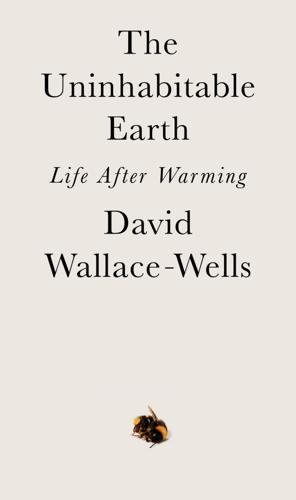
The Uninhabitable Earth: Life After Warming
by
David Wallace-Wells
Published 19 Feb 2019
All of these test Ghosh’s thesis, since they are climate-powered novels with the narrative architecture of the classic bourgeois novel, more or less. Cormac McCarthy’s The Road is a bit of a different beast—a climate epic. But those who these days talk up cli-fi as a genre seem to mean something more…well, genre—for instance, Kim Stanley Robinson’s Science in the Capital trilogy and, later, New York 2140. Going back further, J. G. Ballard’s Drowned World trilogy is an exquisite example. especially in conventional novels: Ghosh is dealing here with a very narrow definition of the archetypal novel, emphasizing stories of protagonist journeys through emerging bourgeois systems.
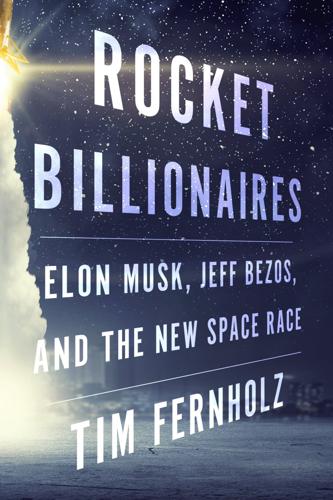
Rocket Billionaires: Elon Musk, Jeff Bezos, and the New Space Race
by
Tim Fernholz
Published 20 Mar 2018
Under his guidance, the group holds conventions, publishes a journal, and sponsors research missions where small groups of people are sent to remote habitats to study the psychological effects of isolation on an interplanetary colony. Musk and Zubrin talked about new ways they could draw attention to the feasibility of a human mission to Mars. A favorite book of both is Red Mars, a sweeping science fiction epic by Kim Stanley Robinson that was published in 1993. The book and its sequels portray a future Martian colony, beginning with an internationally funded mission made up of scientists and explorers who create a new society on Mars. The space-opera-by-way-of-Ayn-Rand tropes that drive the novel’s plot are straight out of Robert Heinlein, with the characters participating in debates about the fundamental nature of the human species and low-gravity lovemaking with equal enthusiasm, in equally turgid prose.

Origin Story: A Big History of Everything
by
David Christian
Published 21 May 2018
Cited in David Christian, “Anthropocene Epoch,” in The Berkshire Encyclopedia of Sustainability, Vol. 10: The Future of Sustainability, ed. Ray Anderson et al. (Barrington, MA: Berkshire Publishing, 2012), 22. 7. Jan Zalasiewicz and Colin Waters, “The Anthropocene,” in The Oxford Research Encyclopedia, Environmental Science (Oxford: Oxford University Press, 2015), 4–5. Chapter 12. Where Is It All Going? 1. Kim Stanley Robinson’s Mars trilogy—Red Mars (1993), Green Mars (1994), Blue Mars (1996)—offers a rich and vivid science-fictional account of what the colonization of Mars might look like. 2. Joseph Campbell, The Hero with a Thousand Faces, 2nd ed. (Princeton, NJ: Princeton University Press, 1968), 46. 3. J. S.

A New History of the Future in 100 Objects: A Fiction
by
Adrian Hon
Published 5 Oct 2020
There are few explorations of history that surpass it in imagination and vividness, and as soon as I finished listening to the hundredth episode, I immediately began thinking of what the next hundred objects might be. More broadly, I owe a debt of gratitude to the writers who have inspired me: Vernor Vinge, Iain Banks, Neal Stephenson, Kim Stanley Robinson, Lewis Hyde, Ted Chiang, George Orwell, Stanislaw Lem, and many more. Without their stories and ideas, the future would be a darker place. Thanks to my editor at MIT Press, Susan Buckley, for her invaluable advice, and the editors of the first edition, Richard Dennis and Andrea Phillips. And thanks to my agent, Veronique Baxter.

Augmented: Life in the Smart Lane
by
Brett King
Published 5 May 2016
Looking ahead to the day when we can apply transgenic modifications to ourselves, many would-be transhumans would probably like to acquire, for instance, the eyes of a hawk, the scales of a lizard, the ability to swim like a dolphin or hold their breath like a crocodile. In the Mars trilogy by Kim Stanley Robinson, the author proposed splicing animal genes into the DNA of the Mars colonists as part of a regular process of getting longevity treatments (which in themselves were corrective gene therapy editing out replication errors in genetic code and restoring telomeres). One of the characters added a cat-derived “purr” to her biology.
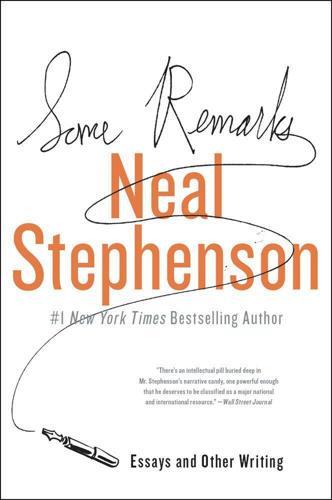
Some Remarks
by
Neal Stephenson
Published 6 Aug 2012
I don’t think of myself that way and people don’t think of themselves that way. Do you worry about losing your old audience? The “Baroque Cycle” is about science, right? And it’s got ideas in it. So to me it’ll appeal to people who read science fiction. There’s always been a lot of historical stuff in science fiction. Kim Stanley Robinson just published “The Years of Rice and Salt”—which is a kind of historical novel. It’s been going on for a long time. Even when I was a kid, reading science fiction stories and books, every so often I’d run across one that happened to be set in the historical past. That was considered to be within the normal bounds of what these people write about.

The Problem With Work: Feminism, Marxism, Antiwork Politics, and Postwork Imaginaries
by
Kathi Weeks
Published 8 Sep 2011
Science Fiction Studies 9 (2): 147–58. ———. 1991. Postmodernism, or, The Cultural Logic of Late Capitalism. Durham: Duke University Press. ———. 1994. The Seeds of Time. New York: Columbia University Press. ———. 2001. “ ‘If I Find One Good City I Will Spare the Man’: Realism and Utopia in Kim Stanley Robinson’s Mars Trilogy.” In Learning from Other Worlds: Estrangement, Cognition, and the Politics of Science Fiction and Utopia, edited by Patrick Parrinder, 208–32. Durham: Duke University Press. ———. 2005. Archaeologies of the Future: The Desire Called Utopia and Other Science Fictions. New York: Verso.
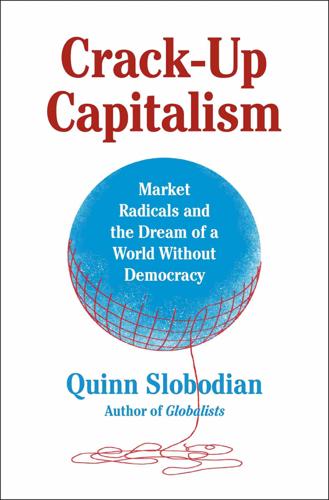
Crack-Up Capitalism: Market Radicals and the Dream of a World Without Democracy
by
Quinn Slobodian
Published 4 Apr 2023
for my sister, Mayana But early in the twenty-first century it became clear that the planet was incapable of sustaining everyone alive at Western levels, and at that point the richest pulled away into their fortress mansions, bought the governments or disabled them from action against them, and bolted their doors to wait it out until some poorly theorized better time, which really came down to just the remainder of their lives, and perhaps the lives of their children if they were feeling optimistic—beyond that, après moi le déluge. Kim Stanley Robinson, The Ministry for the Future INTRODUCTION Shatter the Map The world’s special economic zones. The dot size corresponds to the area covered by each zone. For an interactive version of the map see openzonemap.com. COURTESY OF THE ADRIANOPLE GROUP Without looking at your phone, how many countries are there in the world?

Nomad Citizenship: Free-Market Communism and the Slow-Motion General Strike
by
Eugene W. Holland
Published 1 Jan 2009
What Jameson does recognize, in the last chapter of the long theoreti cal essay that opens the book, is that the grip of totalizing thought and absolute formal closure on utopian fiction begins to relax in the waning decades of the twentieth century, as a new mode of utopian thinking ap pears, both in fiction (he cites Kim Stanley Robinson’s great Mars trilogy) and in theory (where he cites Robert Nozick from Anarchy, the State, and Utopia and Yona Friedman’s Utopies réalisables). Rather than the “obsessive search for a simple, single-shot solution to all our ills”19 that characterizes the Imagination of classic utopian texts, more recent utopian thought and fiction acknowledge and emphasize Fancy and the plurality of possible utopias instead.
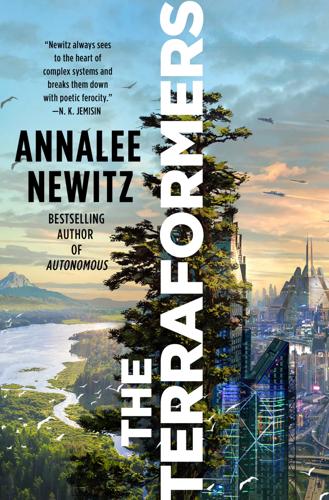
The Terraformers
by
Annalee Newitz
There was no point in flying the hard route ahead if they couldn’t enjoy the day while it lasted. ACKNOWLEDGMENTS I wrote this book because I wanted to dream up a more hopeful world. And so my first thanks go to poet Stephanie Burt, who told me several years ago that I obviously needed to write an epic about nation-building. Kim Stanley Robinson, author of many geoengineering epics, told me (jokingly) that he would permit me to write about terraforming as long as I included a character named Kim, and so I have. Filmmaker Sonya Ballantyne spent quite a bit of time talking to me about Cree futurism, which is an undercurrent throughout this book, and later graciously did a sensitivity read on the whole manuscript.

Giving the Devil His Due: Reflections of a Scientific Humanist
by
Michael Shermer
Published 8 Apr 2020
In The Dispossessed, for example, Ursula K. Le Guin explores tensions between capitalist/individualist societies like ours and that of collectivist systems like the Soviet Union, or even anarcho-syndicalist systems involving industrial unionism. In his Mars trilogy (Red Mars, Green Mars, Blue Mars), Kim Stanley Robinson plays out the consequences of transnational corporations (“transnats”) gaining enough control and power over Martian citizens, leading to a balance between a global government overseeing relatively autonomous settlements and cities and a blended economic system of capitalism, socialism, and environmental conservationism; this works so well that soon Martians face the problem of illegal immigration – from Earthlings whose planet has suffered from environmental ruin.

Case for Mars
by
Robert Zubrin
Published 27 Jun 2011
You can join the Space Frontier Foundation by sending $25 to: The Space Frontier Foundation, 16 First Avenue, Nyack, NY 10960. The Mars Society is the newest of the space organizations. Together with many other members of the Mars Underground, including Chris McKay, Carol Stoker, and Tom Meyer, as well as science fiction authors Greg Benford and Kim Stanley Robinson, I founded the Mars Society with the purpose of furthering the exploration and settlement of Mars by both public and private means. Our founding convention in Boulder, Colorado, in August 1998 drew 700 people from 40 countries, featured 180 papers and talks on everything from Mars mission strategies to the ethics of terraforming, and attracted international press coverage.

The Case for Space: How the Revolution in Spaceflight Opens Up a Future of Limitless Possibility
by
Robert Zubrin
Published 30 Apr 2019
You can join the Space Frontier Foundation by sending $25 to The Space Frontier Foundation, 16 First Avenue, Nyack, NY 10960. For more information, go to www.spacefrontier.org. The Mars Society is the newest of the space organizations. Together with many other members of the Mars Underground, including Chris McKay, Carol Stoker, and Tom Meyer, as well as science fiction authors Greg Benford and Kim Stanley Robinson, I founded the Mars Society with the purpose of furthering the exploration and settlement of Mars by both public and private means. Our founding convention in Boulder, Colorado, in August 1998 drew seven hundred people from forty countries, featured 180 papers and talks on everything from Mars mission strategies to the ethics of terraforming, and attracted international press coverage.
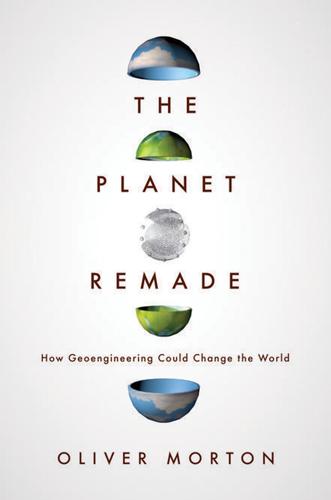
The Planet Remade: How Geoengineering Could Change the World
by
Oliver Morton
Published 26 Sep 2015
All these abilities are now devoted to perhaps the crucial question of our time, the climate, making this simply a Necessary Book, which is also a pleasure to read. Maybe that combination makes it sui generis, but in any case it’s an important addition to current discourse, an excellent way to get oriented to our most pressing environmental problem, and I urge people to read it and ponder its news.” —Kim Stanley Robinson, author of Red Mars and Aurora “This is the first book to properly consider the dimensions of the new world we are living in. Morton’s book is indispensable, highly readable, and incredibly timely.” —Mark Lynas, author of The God Species “Written with the grace and clarity its subject demands, The Planet Remade offers just what the issue of climate change needs: fresh thinking about what can be done, based on deep respect for the planet, the science, and the concerns of people with differing points of view.

The Year's Best Science Fiction: Twenty-Sixth Annual Collection
by
Gardner Dozois
Published 23 Jun 2009
Otherworldly Maine (Down East), edited by Noreen Doyle, was a mixed reprint (mostly) and original anthology which featured strong reprints by Edgar Pangborn, Stephen King, Elizabeth Hand, and others, as well as good original work by Gregory Feeley, Lee Allred, and Jessica Reisman. Just exactly what qualifies one to be a Savage Humanist is a bit unclear, in spite of a long analytical introduction, but The Savage Humanists (Robert J. Sawyer Books), edited by Fiona Kelleghan, features good reprint stories by Tim Sullivan, Greg Frost, John Kessel, James Patrick Kelly, Kim Stanley Robinson, and others. When Diplomacy Fails (Isfic Press), edited by Mike Resnick and Eric Flint, is a reprint anthology of military SF by Harry Turtledove, Gene Wolfe, David Weber, Tanya Huff, Resnick and Flint themselves, and others. The Best of Abyss & Apex: Volume One (Hadley Rille Books), edited by Wendy S.
…
Coming up from AMC is a new version of the old British show The Prisoner, another cult favorite, which Prisoner fans seem to be either dreading or looking forward to with anticipation, depending on who you talk to, and mini-series versions of George R.R. Martin’s A Game of Thrones from HBO and Kim Stanley Robinson’s Red Mars from AMC. Let’s hope that they can do a better job with them than the Sci Fi Channel did with Ursula K. Le Guin’s A Wizard of Earthsea. The 66th World Science Fiction Convention, Denvention 3, was held in Denver, Colorado, from August 6 to August 11, 2008. The 2008 Hugo Awards, presented at Denvention 3, were: Best Novel, The Yiddish Policeman’s Union, by Michael Chabon; Best Novella, All Seated on the Ground, by Connie Willis; Best Novelette, The Merchant and the Alchemist’s Gate, by Ted Chiang; Best Short Story, “Tideline,” by Elizabeth Bear; Best Related Book, Brave New Words: The Oxford Dictionary of Science Fiction, by Jeff Prucher; Best Professional Editor, Long Form, David G.
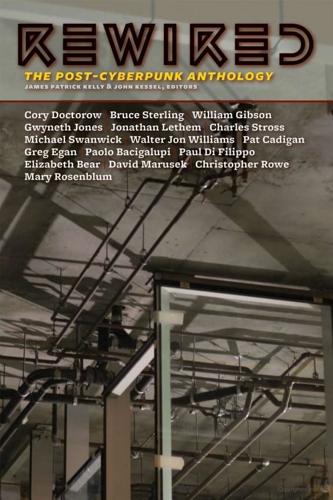
Rewired: The Post-Cyberpunk Anthology
by
James Patrick Kelly
and
John Kessel
Published 30 Sep 2007
I wondered if I’d need a prosthesis, if I’d still be able to do surgery, but as the bandit approached me I felt a strange rush of confidence. I held out my hand and looked up into the sky. I knew that anything could be healed, once it was understood. Sterling to Kessel, 7 April 1986: “Actually I’ve been wanting to do something on BOFFO [aka humanist sf] for some time…. I was further stimulated by the appearance of [Kim Stanley] Robinson’s ‘Down and Out in the Year 2000’ in the April MOV’S, with its long Gibson parody and slashing backhand to Sterling. This was one of Robinson’s best stories, I thought, and a point well taken. His attempt to seize the moral high ground in the debate seemed a canny attempt to use BOFFO’S perceived strengths — at least vis-à-vis the anomic medical objectivity of true chrome-and-matte-black cyberpunk.

WTF?: What's the Future and Why It's Up to Us
by
Tim O'Reilly
Published 9 Oct 2017
Familiar companies, technologies, ideas, and social structures hide others with a vastly dissimilar structure, and we see only ghostly images until the new comes into focus. Once your eyes have adjusted to the new light, you see what was previously invisible to you. Science fiction writer Kim Stanley Robinson captures this moment perfectly in his novel Green Mars, when one of the original settlers of Mars has a shock of insight: “He realized then that history is a wave that moves through time slightly faster than we do.” If we are honest with ourselves, each of us has many such moments, when we realize that the world has moved on and we are stuck in the past.

Antarctica
by
Kim Stanley Robinson
Published 6 Jul 1987
ANTARCTICA Kim Stanley Robinson "The land looks like a fairytale. - ROALD AMUNDSEN 1. Ice Planet First you fall in love with Antarctica, and then it breaks your heart. Breaks it first in all the usual sorry ways of the world, sure-as for instance when you go down to the ice to do something unusual and exciting and romantic, only to find that your job there is in fact more tedious than anything you have ever done, janitorial in its best moments but usually much less interesting than that. Or when you discover that McMurdo, the place to which you are confined by the strictest of company regulations, resembles an island of traveler services clustered around the offramp of a freeway long since abandoned.
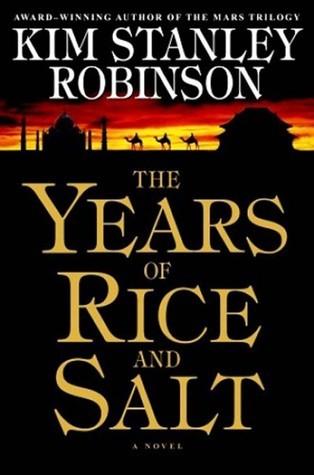
The Years of Rice and Salt
by
Kim Stanley Robinson
Published 2 Jun 2003
The Year of Rice and Salt Kim Stanley Robinson Tripitaka: Monkey, how far is it to the Western Heaven, the abode of Buddha? Wu kong: You can walk from the time of your youth till the time you grow old, and after that, till you become young again; and even after going through such a cycle a thousand times, you may still find it difficult to reach the place where you want to go. But when you perceive, by the resoluteness of your will, the Buddha nature in all things, and when every one of your thoughts goes back to that fountain in your memory, that will be the time you arrive at Spirit Mountain.
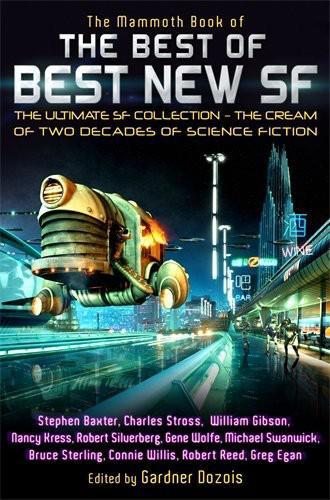
The Best of Best New SF
by
Gardner R. Dozois
Published 1 Jan 2005
For starters, although novellas have always been among my favorite stories in the Bests, and there are easily a dozen or more that ought to be in the multidimensional, infinitely-expansible version of this book (Michael Swanwick’s “Griffin’s Egg,” Frederic Pohl’s “Outnumbering the Dead,” Ursula K. Le Guin’s “A Woman’s Liberation,” Kim Stanley Robinson’s “Green Mars,” William Barton’s “Off on a Starship,” Lucius Shepard’s “R&R,” Nancy Kress’s “Beggars in Spain,” Robert Silverberg’s “Sailing to Byzantium,” Judith Moffett’s “Tiny Tango,” Greg Benford’s “Immersion,” Greg Egan’s “Oceanic,” Ian McDonald’s “The Days of Solomon Gursky,” John Kessel’s “Stories For Men,” and so many more), here in the real world where practical considerations of length exist, I clearly had room for no more than a few of them, if I wanted to get a large selection of authors representative of twenty years’ worth of Best volumes into the book.